#part of my 70s fashion research
Explore tagged Tumblr posts
Text
welcome to forget me not valley, which eligible man(datory husband) will you be pursuing


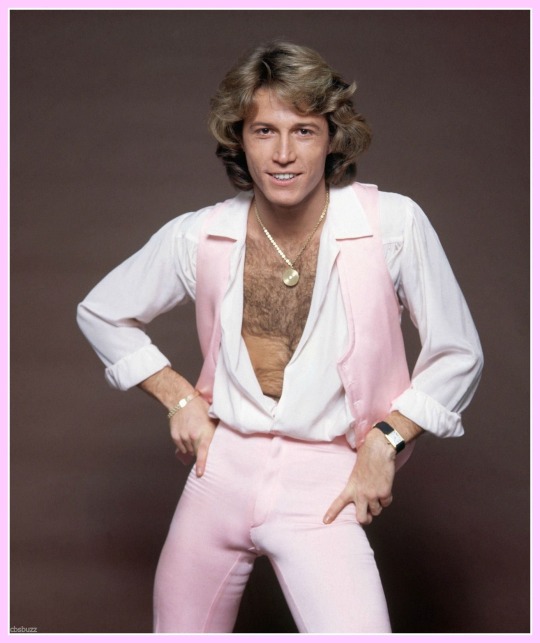
#queue tea pie#part of my 70s fashion research#1st picture by Joel Meyerowitz 1975 in new york#with gustafa i combined several ideas but this is why i decided on his hat being that shape. the way it folds looks like his snufkin hat :3#2nd picture is alvin stardust also in 1975#i always see him compared to elvis but in terms of appearance he reminds me more of this guy#i think marlin would wear leather in the winter. if you’ve ever ridden a motorcycle you know how it be#3rd is andy gibb in 1978#did not use because it was 1. already just a palate swap of what rock wears in the original games#2. That#it’s in character but still
58 notes
·
View notes
Text
Fansub release for Utena ep 19 + Japanese culture lesson

Utena: やっぱり若葉って普通の女の子なんだね。きっといいお嫁さんになるよ。
WHAT a loaded line. Let’s look at my translation of the first part:
Utena: You’re such a normal girl, Wakaba.
I think this line shows that at this point in the story, Utena has come to terms with the fact that they’re not a “normal” girl, but despite this self-recognition, they still see normalcy as something inherently good that one should strive for. They’re still in the clutches of an idealised status quo. Now let’s look at the next part. A literal translation would be:
Utena: I'm sure you'll make a good bride. (from ohtori.nu)
But like… who says it like this in English anymore? While this phrasing sounds natural in Japanese, it sounds extremely old fashioned and weird in English. How would a native English speaker voice the same thought? I think it would be something like this:
Utena: You’ll probably make some guy very happy. (my translation)
This means the same thing, but sounds much more natural. This is another example of how to be a good translator, you need to be a good writer. You can’t just transpose words of the same meaning, you have to understand the thought behind the words, and then write a new sentence with the same thought behind it, but in the target language.

Wakaba: そうよ。ようやく気づいたの。やっぱり私はあの王子様が好きなんだって… そして、神様のおかげで王子様もやっと私の事振り向いてくれるようになったのかなって。
Wakaba: You’re right. I finally realised. I do love that prince of mine. And maybe, somehow… Something will finally happen between us.
There are a few things I want to talk about in this passage. First of all, 神様のおかげで. This is a phrase that literally means “because of the kami-sama (/positive)”. It’s often translated as “thanks to God” or “by the grace of God” or “thanks to divine intervention”, but to translate it this way is to erase the nuances of Japanese religious custom and worse, Christianise a non-Christian character.
In Japanese culture, Shinto and Buddhism are seen by the vast majority of people not as religions, but as customs. According to several surveys, approximately 70% of Japanese people specify they have no personal faith, despite statistical research showing that about 70% of Japanese people practice Shinto rites and practices, and another 70% of Japanese people practice Buddhist practices. This is because Japanese people follow these practices as a matter of culture and custom, not of faith. Participation rates in 初詣 (hatsumode), the first shrine visit of the year, are extremely high despite many participants not truly believing in the spiritual aspect. In Japan, Shinto and Buddhism are more about tradition and participation than faith and affiliation. And this is just based on anecdotal evidence from my own life, but I think a lot of Japanese people wouldn’t be able to explain the difference between Shinto and Buddhist belief systems. They all get blended together as part of the culture. Shinto and Buddhism ARE Japanese culture. The teachings of those religions inform the Japanese way of looking at and interacting with the world, despite the spiritual elements not being directly believed by many Japanese people.
On top of that cultural background, the concept of “kami-sama” (or just “kami”) are not God, or even gods. Generally, Shinto kami are more spirit than god, with kami said to inhabit everything from ancient trees to ramen bowls. In a way, they’re like the essence of the world. One could even say they are “the universe”, in the same way that secular English speakers might say “the universe is trying to tell me something”.
I don’t believe this line is showing that Wakaba is a believer in Shinto. It’s just showing that she believes that the universe is rotating in a favourable way for her. The “kami-sama” that she mentions are not literal kami or gods, but simply an indication that, through no direct action of her own, something good is happening to her (I have confirmed this interpretation with my dad, who is Japanese and was raised in Japan).
Wew… okay. Onto the second thing I wanted to talk about in this passage LOL
王子様もやっと私の事振り向いてくれるようになった
The final translation for this line was:
Something will finally happen between us.
But a more literal translation would be:
He’s finally looking my way.
In fact, I actually liked this more. I thought the imagery from the original Japanese was nice, and it translated directly quite well. The only problem was that pesky pronoun…
As Anya rightfully pointed out, you could read this as a setup for Utena being Wakaba’s prince. Certainly it’s all there in the text — Wakaba did repeatedly insist that “it’s not like that” between her and Tatsuya, she often treats Utena like a boyfriend, and it would even explain her getting flustered after Utena pressures her to reveal who her “prince” is at the lunch table. And let’s not forget Tatsuya’s line “I noticed that she looks the happiest when she's with you, Utena.”
Some of this exchange had to be rewritten to completely avoid using any singular pronouns, lest we spoil the reveal at the end. For example, this line had to be changed from a focus on the prince to an indirect line about the both of them. I think the line still captures the general sentiment, but it’s a shame it had to change so much from the original phrasing!

Thanks to @dontbe-lasanya for the amazing editing, especially for picking up the pronoun issue when talking about the prince!
Follow my blog if you'd like to stay up to date with new episode releases! You can see all episodes released so far here:
Rose divider taken from this post
#revolutionary girl utena#rgu#shoujo kakumei utena#sku#utena#translation#japanese culture#japan#japanese language#langblr#utena fansub#official blog post
57 notes
·
View notes
Note
Hi!
I don't wanna pressure u, respond in your own time
But like, I've been studying the play Fences, which is about a Black family in the 1950s and 60s. And i was creating costume designs for the wife Rose and taking into account how it would change over the play
And I found out through research that Black hair is a form of protest and a form of self expression because it used to be heavily controlled and their freedom with hair was very restricted
I came up with having her start by wearing her hair in a low bun under a headscarf because of how Troy had power over her in the beginning, but by the end of the play her hair would be out of the bun + scarf and fall naturally around her head, showing that she gained her own power and voice over Troy
But of course I still have a lot to learn myself and I really really want to explore how to show Rose's character growth through the meaning of her hair. So is there anything you can tell me about Black hair history and how it was used as a form of protest and self-expression? Are there any specific hairstyles that mean a lot in Black protest history? If so, I would love to know!
No pressure, of course, this is merely out of genuine interest and curiosity
There is a specific section in this lesson (though I highly suggest reading all of it) that discusses the history of the afro! The natural hair that grows out of our head is a form of protest; has been for a very long time. But the afro has a specific history with protest, a symbol of my power and presence.
Even now, having natural hair, especially when it's shorter, is hard for Black women, having long grown used to long, thin hair being the acceptable (white) beauty standard. She probably wouldn't be treated well by all circles for having chosen to wear her own hair in its curls or picked out (hell, even now having locs some older Black folks act like you just don't care about yourself 🙄) but yeah, that to me would be a real deep way of taking back her autonomy.
61 notes
·
View notes
Text
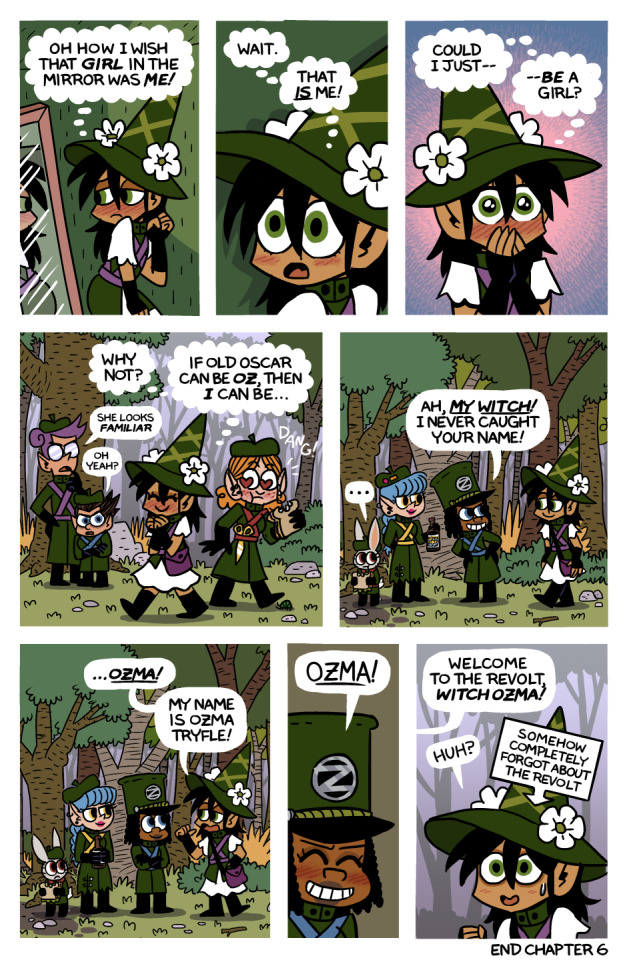
Ozma right now: 🐥🐥🐥🐥🐥
This is based largely on my own relationship with dresses and the mirror when I was Ozma's age, but I'm perhaps channeling a bit of the spirit of Edward Einhorn's short story, "Ozma Sees Herself", found in Oz Story Magazine #3.
As part of my quest for quasi-historical accuracy, I decided it was okay to give Salye Soforth some anachronistic 70's punk fashion after researching the history of safety pins to make sure they existed in 1904. Also, she's drinking a brand of root beer that no longer exists. I did enough research to make sure I didn't use the logo from the 1960s or 2000s, though I'm not 100% sure it was available in ready-to-drink bottles by then (they only sold it as extract and syrup early on).
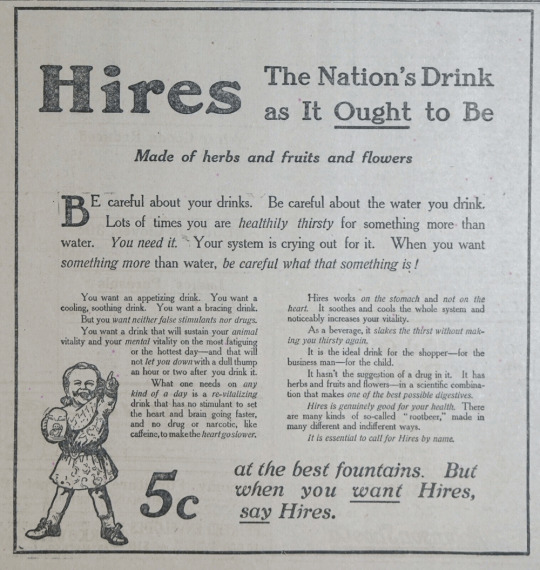
If you like my comics, please support me on Patreon! (link in bio)
#transgender#trans#queer#lgbtqia#euphoria#ozma#general jinjur#Wait - isn't this is all happening WAY sooner than it did in the book???
240 notes
·
View notes
Text
Meet Husk🐈⬛🎰🪄

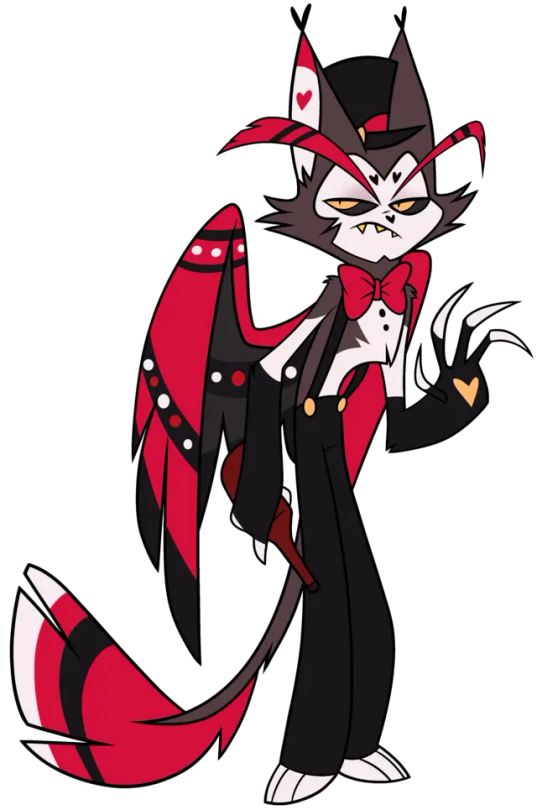
Made my own take on Husk for fun! Ngl I ended up changing alot more than I thought I would.
Made him a Tuxedo Ragamuffin cat. They’re said to look the closest to rabbits, to fit with the whole Magicians and rabbits thing, without loosing all the fun stuff with his cat theme 🐈⬛.
Made his coat a more dark gray with greenish tint!
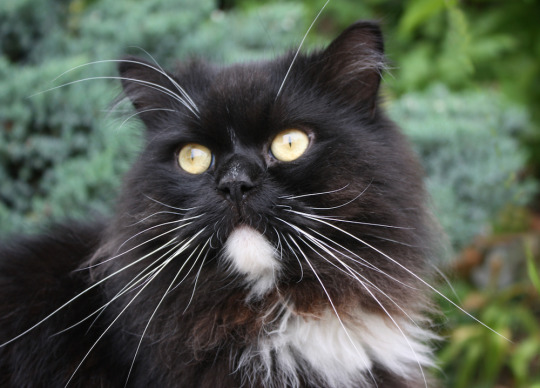
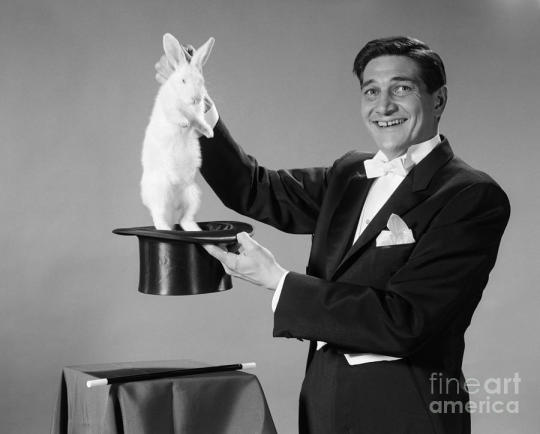
Gave him a vest, a popular thing for both bartenders and magicians to wear, plus a popular 70’s fashion. Made it poker table themed. Also added stripes @a-sterling-rose pointed out it could connect him with Alastor who's also got stripes.
Added a nametag unto it!
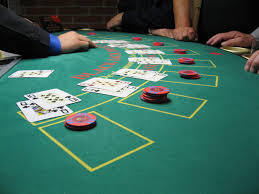
Gave him a shirt, made the collar sharp as that was also an iconic 70’s look. It’s been said he died around the 70’s.
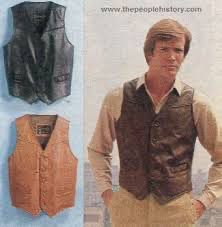
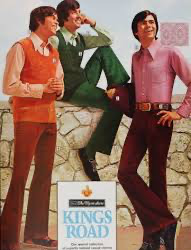
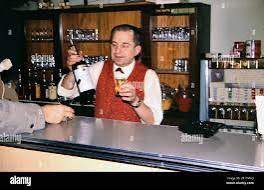
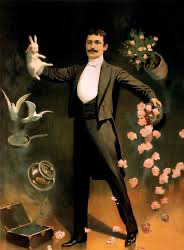
Went with green, @the-burd-lord helped me out here, suggesting it fits best with his personality(also can mean renewal and rebirth), plus it’s often seen as a color of fortune and luck along with red! I also added gold as it also shows fortune and can symbolize a gold heart 💛 I can totally see him and Mimzy argue over who pulls it better.
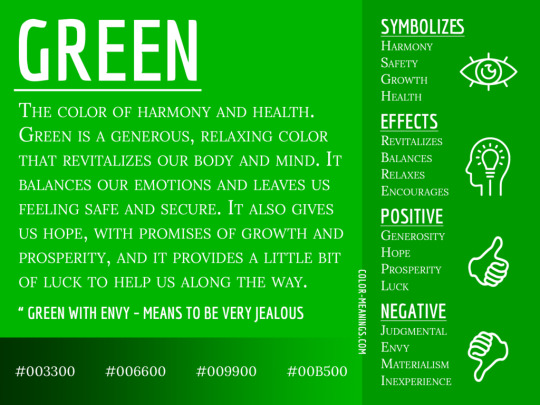

I'll admit. Garfield Def inspired me in how to design Husks body build. I really digged @skwtches style on Husk especially with the body change!
Instead of hearts I made his main symbol the Ace of Spades ♠️ with its significance to life, death and luck. Also added more clubs as they’re also revolved around that.
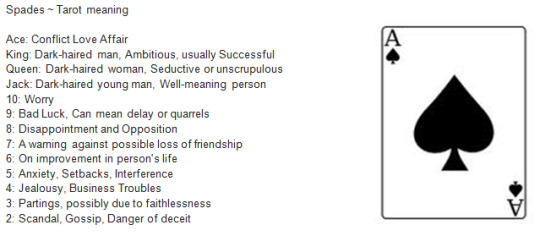
“The spade represents a leaf of the "cosmic" tree, and thus life. Along with its companion suit, clubs, spades represent fall and winter and the power of darkness. In the Tarot, they symbolize intellect, action, air, and death”
Made his Hat more crumpled and added an ace card into it🎩♠️
Added rolls on his pants(still has suspenders the vest just covers) and added diamond and club patches!
Gave him a watch that looks like a casino chip 🎰🪙
Made his eyes with gold with green irises! Also made his eyebrows shorter and white.
Made his hands and feet more cartoon paw like with gold claws.


Untied his bow tie. I imagine he only ties it, if Alastor tells him to or wants to make himself looks more charming and presentable..
Beer Belly!!!!!!!!!!!!!
WHISKERS!!!!!!!!!!


I know the picture doesn’t show it but he def does still have a tail but it’s shorter and fluffier looking(one of Angels many favorite things about Husk)
For the suit order on his wings and vest buttons, normally the order power wise is the Spade, heart, diamonds then clubs but instead the hearts at the bottom, to show his hearts the most vulnerable, how he’s very guarded and protective about getting hurt from caring too much💔. Instead the diamond replaces the heart as he’s able to gain profit/fortune well(just has trouble keeping it due to his gambling and buying booze a lot) and then the clubs as his lucks always going back and forth♦️♣️
For his wings I missed the old suit symbols the pilot wings had so I brought them back and made them bigger. And did some research and the dots on Husks new wings are Roulette board circles which I think is cool so I kept those but reworked it to look part of a roulette wheel too.
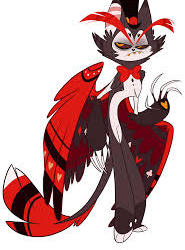
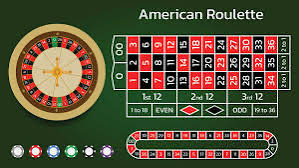
Also made takes on other Hazbin characters, Charlie, Vaggie, Angel Dust, Alastor Niffty and Baxter🍎🦋🕷️🦌🐛🐟
What do u think? How would u redesign Husk? I’d love to know💖
#hazbin hotel#hazbin hotel redesign#hazbin hotel redesigns#Hazbin redesigns#hazbin redesign#Hazbinhotel#hazbin hotel fanart#hazbin fanart#husk#husk redesign#my art#husk fanart#hazbin husk#hazbin hotel husk#Hh
56 notes
·
View notes
Text
part 1 (both girls in their full outfits) ; part 2 (Edwina in several other outfits/sketches) ; part 3 (the companion to this piece aka Edwina getting ready :)
part 4 of my fem!payneland fanart series!!!! as I talked about with the poll, I have quite a few variations of this piece as I couldn’t make up my mind on a few of the elements, but I listened to your feedback and have included them all here !! the winner of the poll is above the cut with the rest of the variations below to hopefully make this not take up too much of your dash lol
lmk what you think - especially people who voted on the poll!! I’ve also included my thought process below the cut since I know y’all are interested :)

- first and foremost: I have absolutely no idea what order someone would get ready in with all these outfit components, so if you’re sitting here like “why is her makeup done when she has to pull a shirt over her head?” or something like that: you’re probably correct but my getting ready process is always chaos and there aren’t exactly articles on this sort of thing
- along with that: her straightening her hair is probably not accurate to how hair works but again I’ve got v little experience to pull from and trying to find a proper reference was a pain in the ass
yes her bra is fully rendered and then got covered up by her arm. I'm still mad that I did that to myself but I like the pose too much to change it so oh well
- (onto actual historical stuff!!)
- her hair is being straightened here despite straight not being in style during this era for several reasons:
1. I based her hair (and a lot of her style, as per part 1) on Rhoda Dakar of the band The Bodysnatchers, which was an all-female band that was part of the ska revival in the late 70s/early 80s. Rhoda Dakar in particular is a British artist (who’s still making music!) with an English mother and Jamaican father—so not only was she one of the only women of color I could find as part of this subgenre/in ths era/with plenty of photo references, but considering Jayden Revri is Jamaican and English (alongside Indian) himself I thought it was fitting! Her Bodysnatchers look is also much more femme leaning than the rest of the band, as well as her hair styled in a way that suggests straightening, so I carried that over to Charlotte here as well.
2. On a related note, there is a clear historical and modern difference in hairstyles worn/made popular/deemed fashionable by non-white versus white individuals and I thought it only appropriate to acknowledge that in my design of her. I even went so far as to research how her mom’s hair may have been styled since I assume that’s who would’ve been teaching her how to care for her hair in the first place. With that, I looked at popular Indian hair trends from the 60s (figuring that’s when Charlotte’s mom could’ve still been in India and following those trends) which also involved a preference for straight/wavy hair, with soft fringe made popular by Sadhana and the styles ranging from long and luscious to styled up into a very 60s beehive. Charlotte could easily also rock a beehive, especially since the 60s revival was a part of the ska revival movement and Dakar herself styled her hair as such, but I figured Charlotte is a little too much of a rebellious teenager to go for a look she’s seen her mom wear!
- her makeup is based off of the different members of The Bodysnatchers as well as other punk/ska fans at the time. The look usually required more blush that what I gave her here, but I wanted to make sure the eyes were the feature (since Charles wears eyeliner himself) and then the lips being any less just looked weird to me. Also, Dakar doesn't seem to wear the same heavy blush that the other members do, which could be a stylistic choice but could also be the potential lack of blush shades that would work well on her skin tone, so I went that route for Charlotte here
- her underwear is all based off of meticulous searching of historical advertisements, though I will admit the sources are (presumably) American since I couldn't find British equivalents (I'm hoping the styles were similar enough...) in particular:
1. Her bra is based off of: Playtex’s New Made for Me, Playtex’s Right For Me, and Playtex’s Thank Goodness It Fits (which are seriously the names of these as per the ads—how creative /s)
2. Her panties (or pants or underwear or whatever term you want to use) are based off of: Sears Best’s Nylon tricot panties, Sears Very Impressive Panties Nylon panties, and JCPenny’s eiderlon fashion panties
3. (In the below variations) Her pantyhose are theoretically based on L’eggs and Spirit by Stevens’s Slim & Slender pantyhose. But, honestly, they’re mostly based on my own experience wearing hose bc almost none of the ads showed how the gusset of the pantyhose actually looked so I needed to fill in the gaps (one of the many reasons I’m still unhappy with them—plus the wrinkles would not look right no matter what I did !!)
4. Her socks are called slouch socks! I don’t have a specific brand for them but the style was all the rage in the 80s-90s (and I want to own some so bad ngl)
- the hair straightener is just a blob based on the reference photo since trying to research historical hair tools was beyond me at the time apparently, but the style of outlet/plug is accurate to Britain in 1989 so there’s that at least (I have no idea why my brain works like this)
- since I talked about it in the poll I feel like I should address it here: technically having a bush was well out of fashion by 1989 due to the grooming boom and new types of hair removal popular throughout the 80s and 90s. However, she’s wearing multiple layers over it and is technically a teenager (in an abusive household and a catholic all-girls school, at that) so I kept going back and forth on it. It won the poll so it’s in the main post, but you’ll see in the below variations that I really went back and forth on it. that being said I do think it’s interesting given her nylon pants being semi-sheer besides at the gusset, so I’m not mad at it. plus I figured she was definitely shaving her legs/underarms, so maybe that balances it out ?
and finally here’s the other seven variations of this piece :) lmk what you think!!
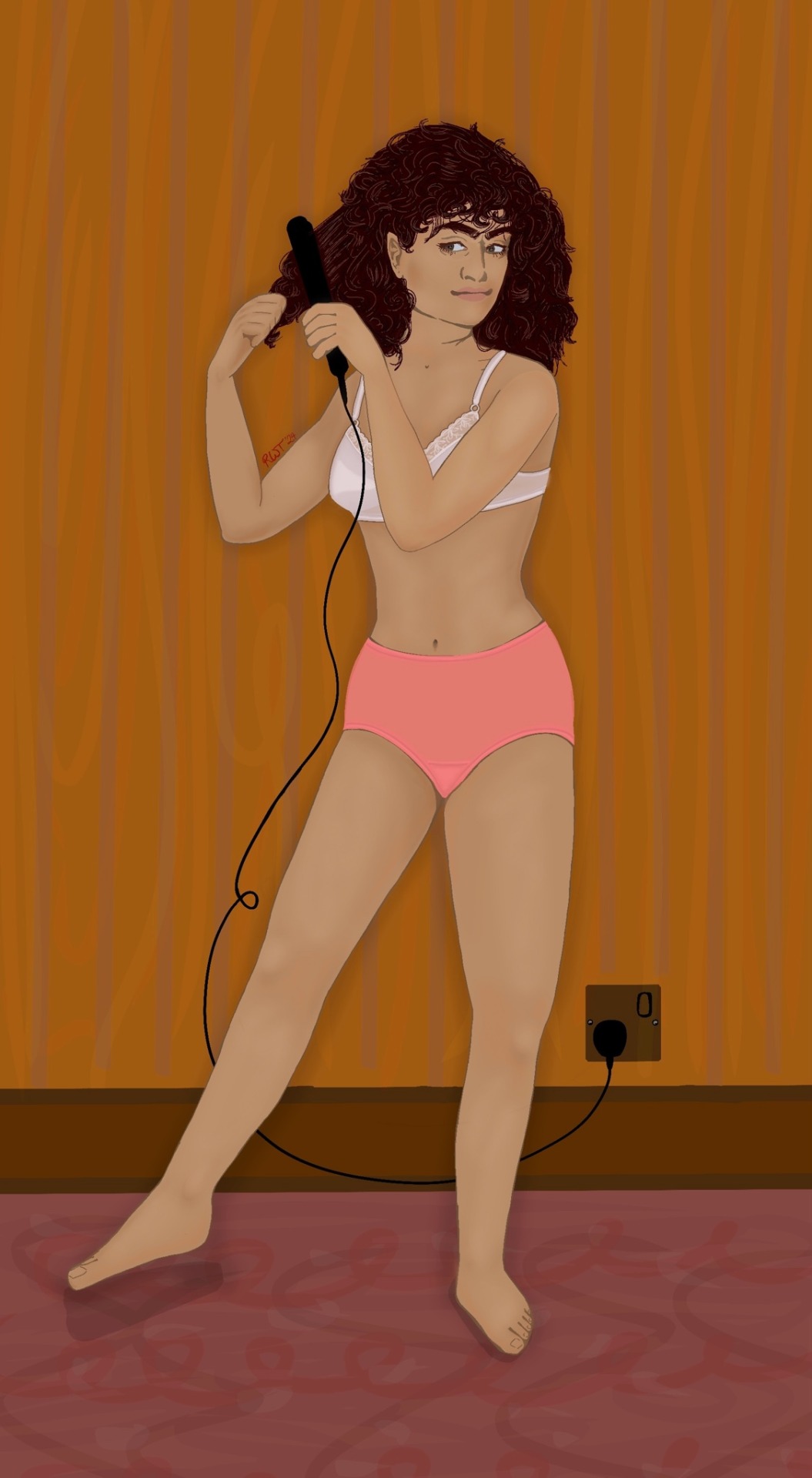
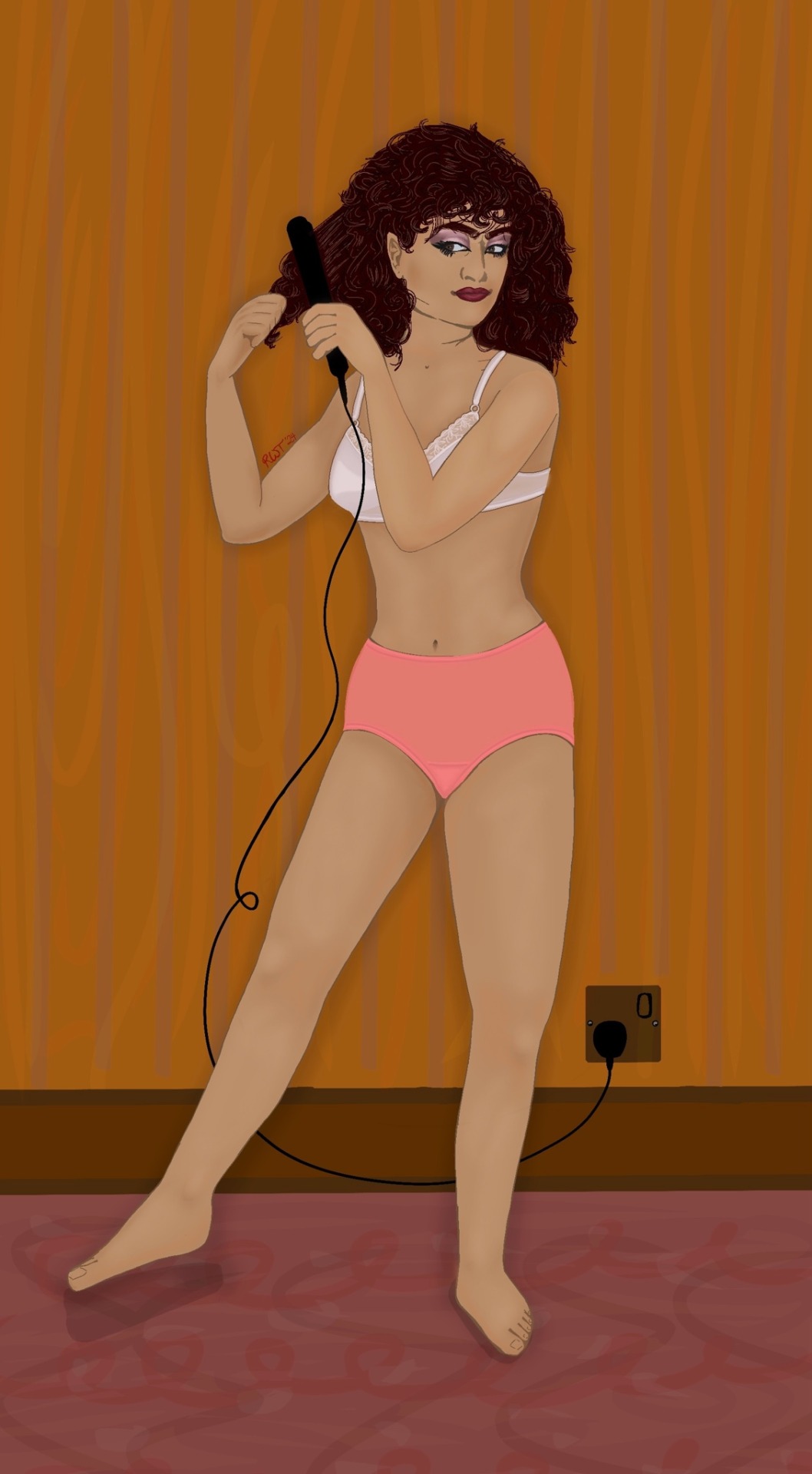
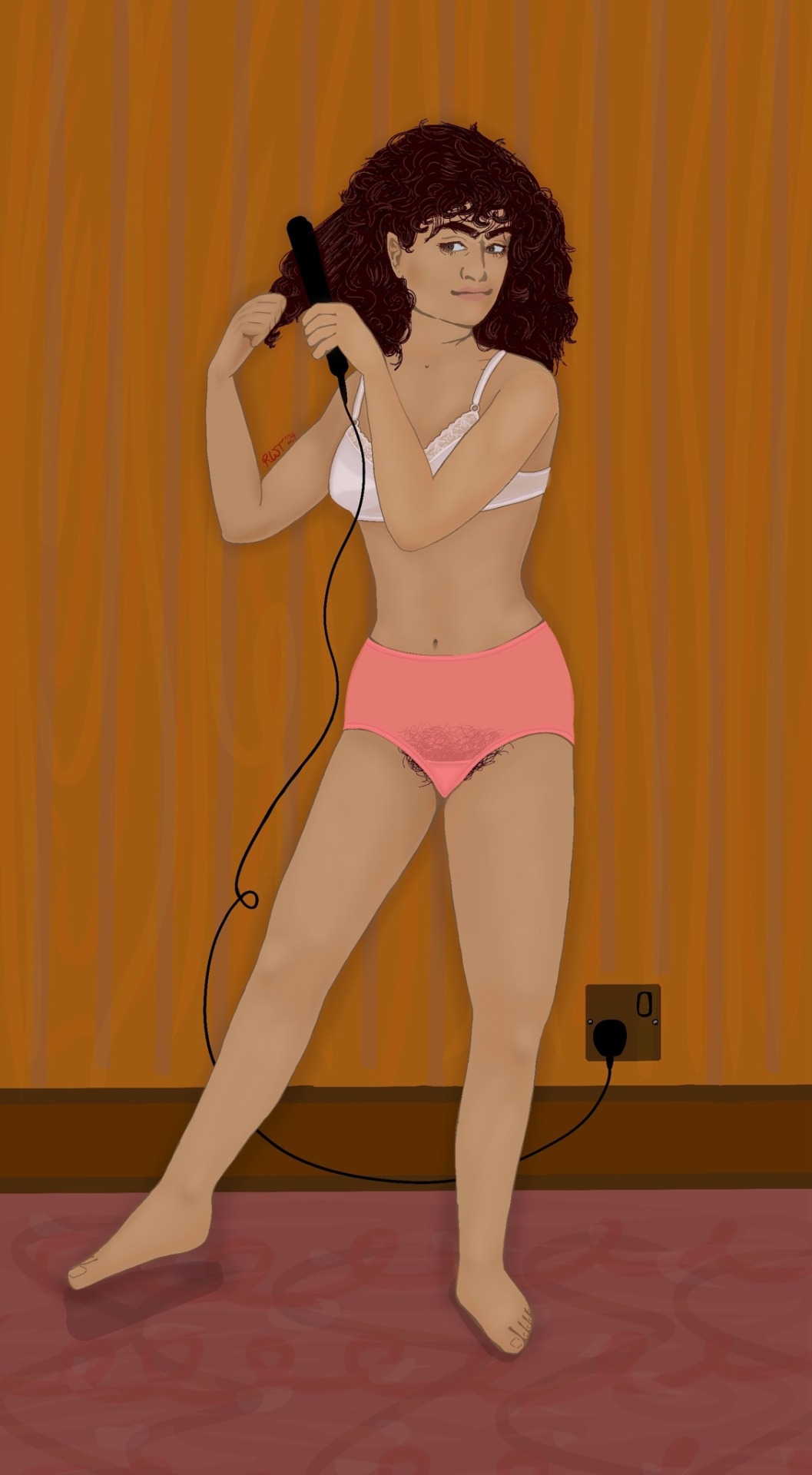
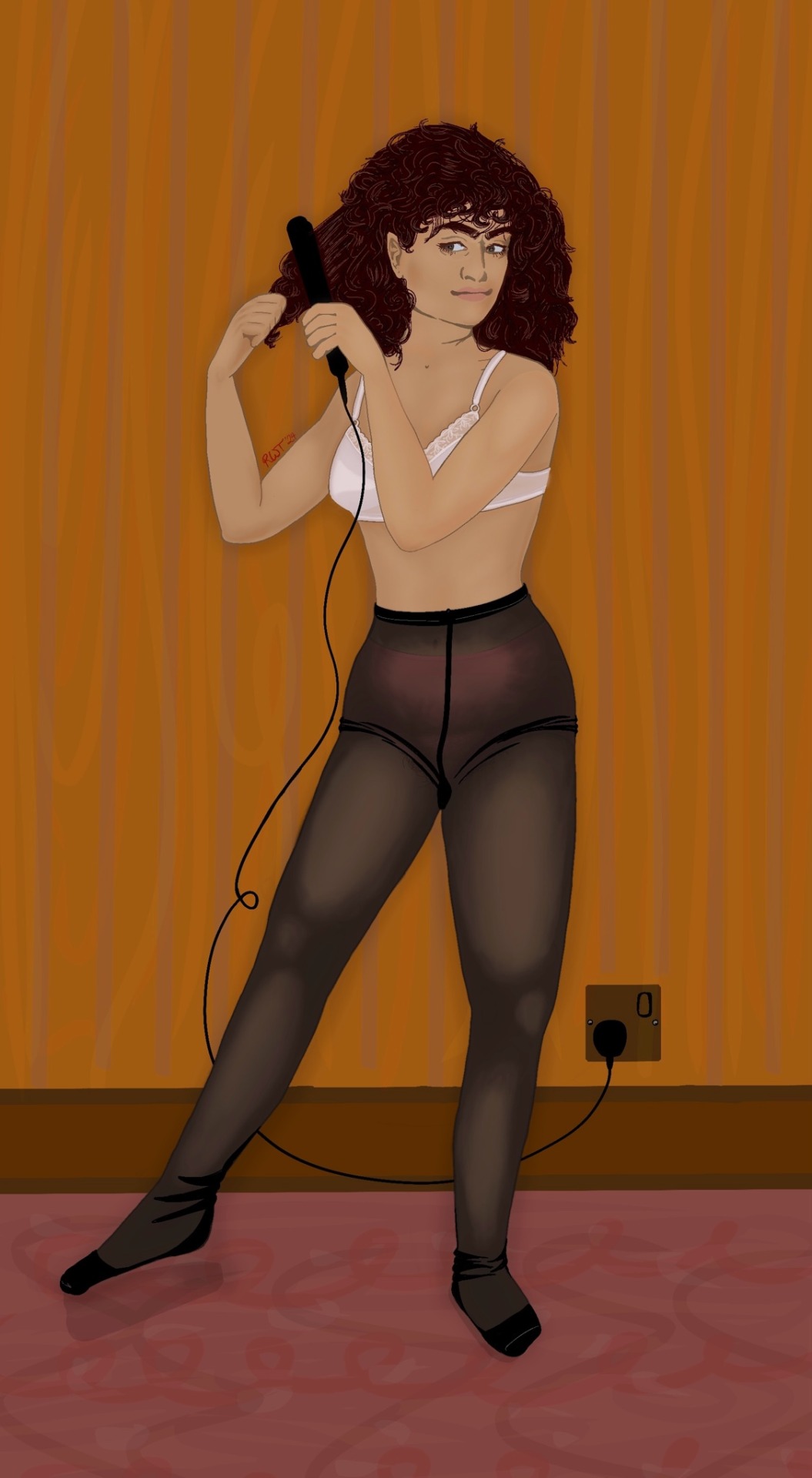
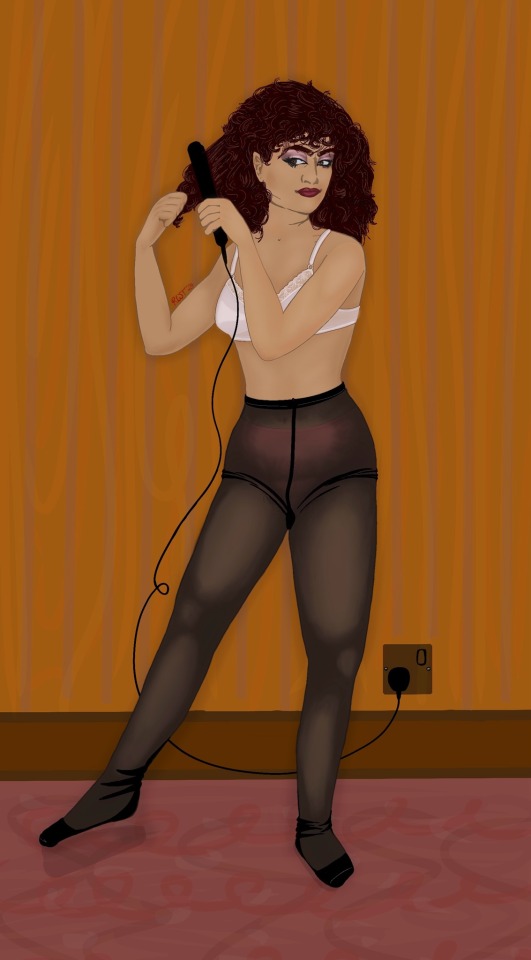
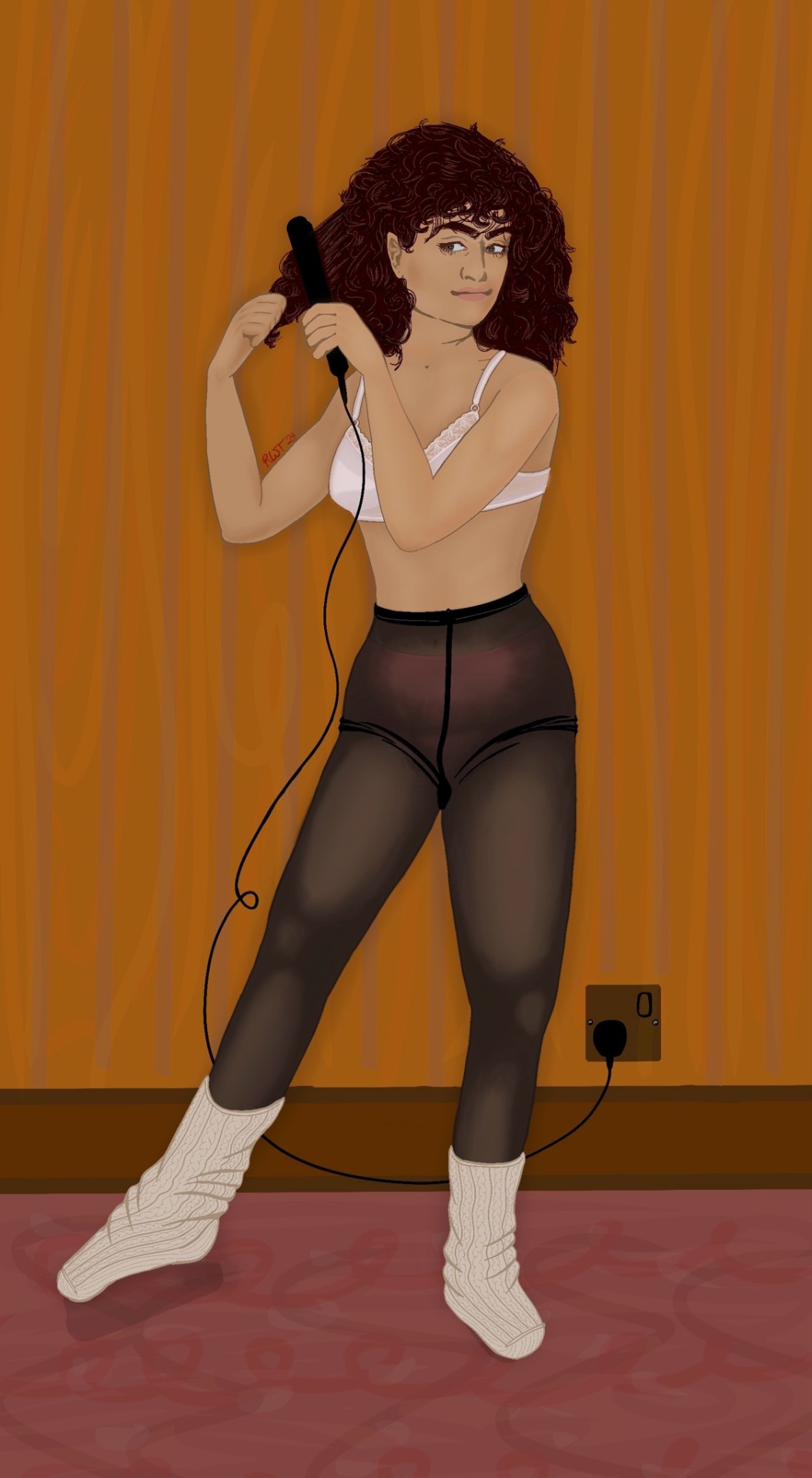
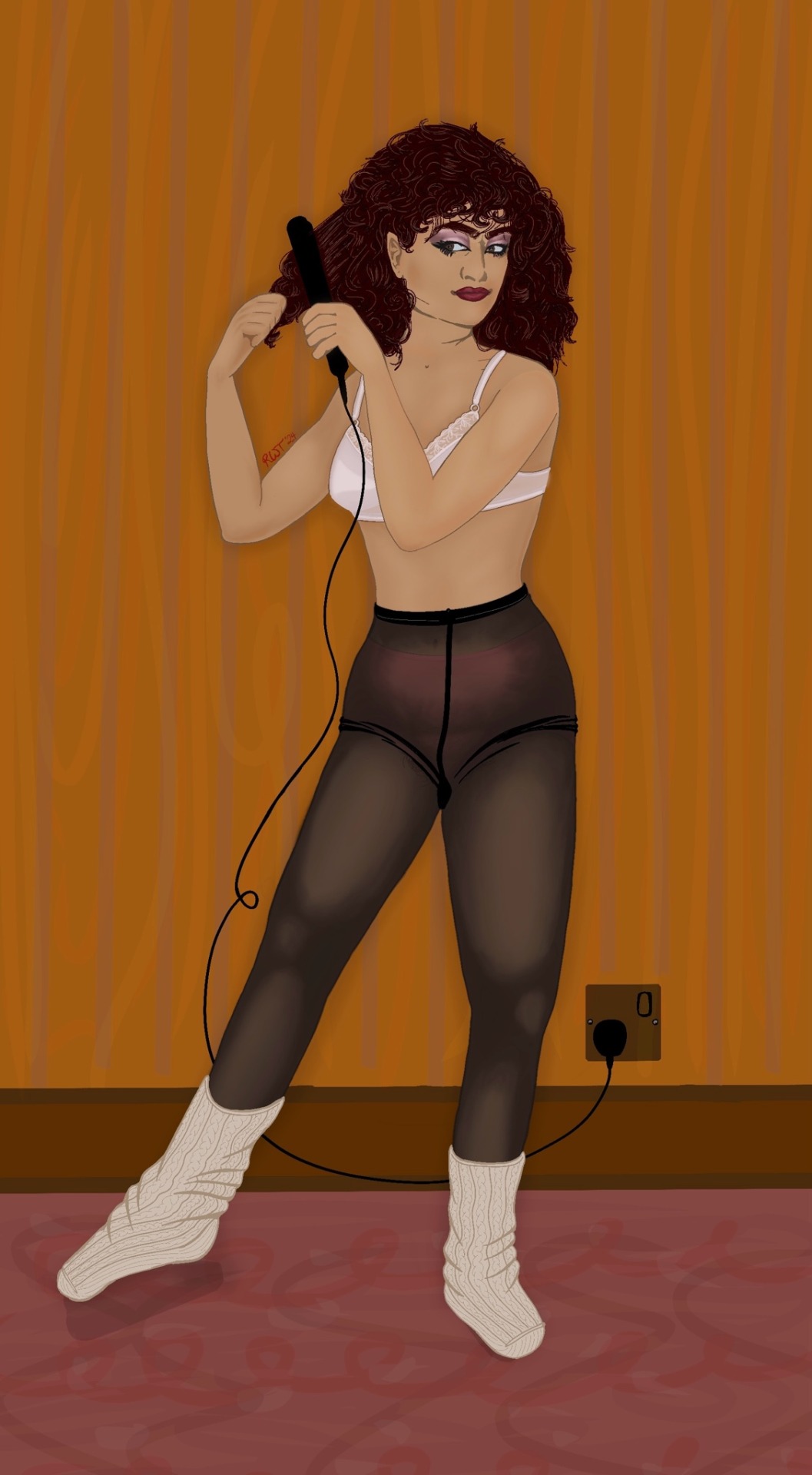
#my art#femme!charles rowland#femme!charlotte rowland#fem!charles rowland#fem!payneland#charles rowland#charlotte rowland#payneland#painland#dead boy detectives#dbda#fanart#charles x edwin#edwin x charles#dbda fanart#the dead boy detectives#dead boy detectives fanart#dead girl detectives#charles rowland fanart#payneland AU#dead boy detective AU#1980s fashion#ska punk fashion#lesbian#femme lesbian#chadwin#genderbend#save dead boy detectives#renew dead boy detectives#dead boy detective netflix
43 notes
·
View notes
Text
Elevator Hitch Genderbending rambles (part one of maybe many)
Hello! Thought I'd flex a little of my research and talk about my designs. Obviously these are pretty fluid, but yeah!
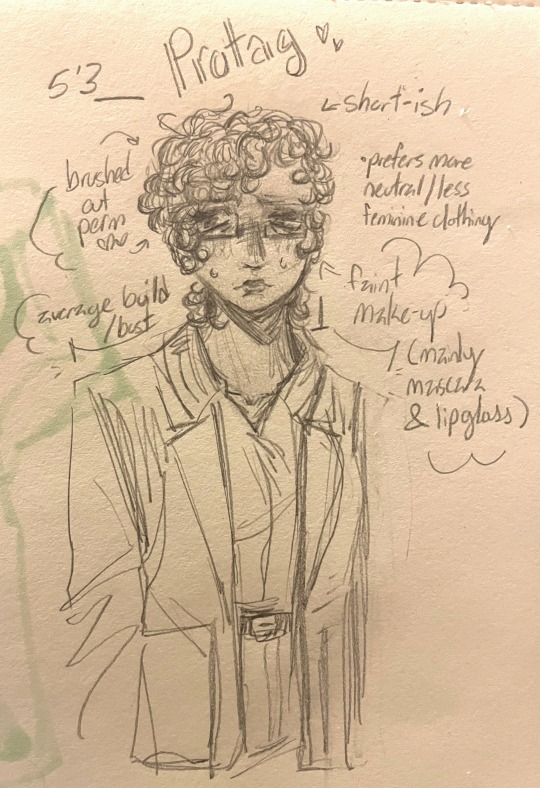
Ms. Protagonist!! Oh the miss average lady you are.... That's really the core of her: average. She dislikes standing out and prefers high pants and a jacket that's loose with little/no scaffolding. She's very obviously feminine/a woman but likes to be a lot more lowkey about it
I like the idea of her having a perm...or at least having one at one point! Maybe the Co-worker convinces her to. But her hair is rather short and a little closer to her head than c!protag's. I'm very okay with her hair being less strict to the time period, since her masc counterpart isn't :}
A general "rule" I have for genderbends is to give or take about 4 inches if you're going one way or the other. She just radiates 5'3 woman to me. I apologize. She wears a cute wedge, which gives her about an inch or two.
70's makeup was much more simple/lowkey compared to the bumper eras of the 60s and 80s. There was a lean more for natural makeup, popularizing pink tinted lip gloss and the invention of cream eye-shadows. F!PT does closer to the minimum, lip-gloss and mascara, but nothing intense.
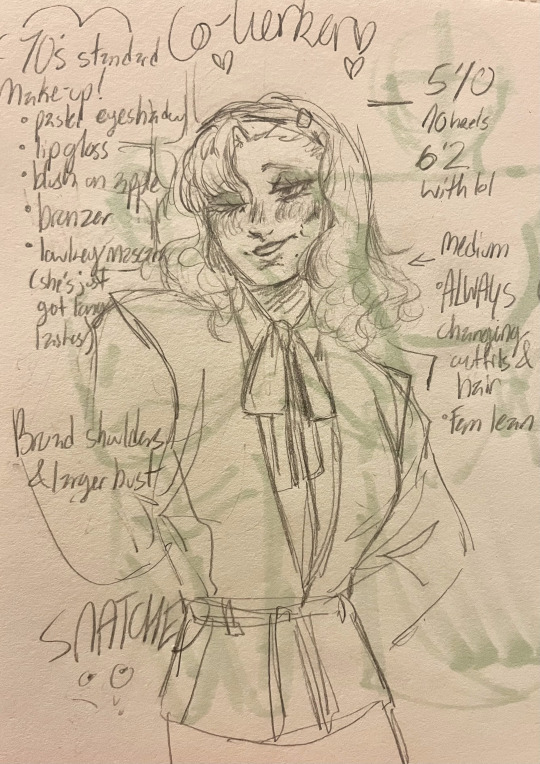
Oh Ms. Co-worker... Oh miss ma'am...
Some people may not agree with me on this one but I cannot resist a big lady opportunity. She very much is tall and broad-shouldered, but very confidently super feminine. She's already tall but loves a good heel so she gets to be even taller. as a treat <3
She loves fashion and has more outfits than triple the years she's been alive and she wears ALL of them. She also changes her hairstyle very often. Art above is just what I think she wears for the game events.
Her makeup is the 70's STANDARD. She does the whole thing and man does she do it well.
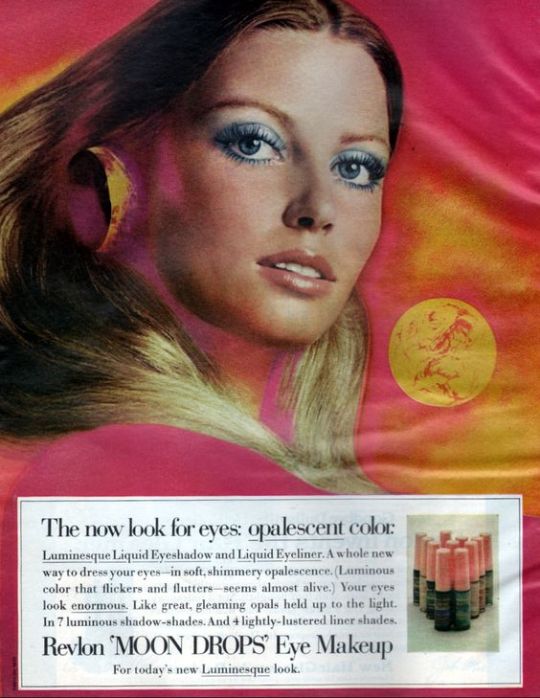
You KNOW F!CW is all over that pastel eye-shadow oh my goodness. She can get away with more eccentric/less work appropriate make-up since she's 1) gorgeous and it fits her perfectly 2) nepo-girlboss
Some more examples!
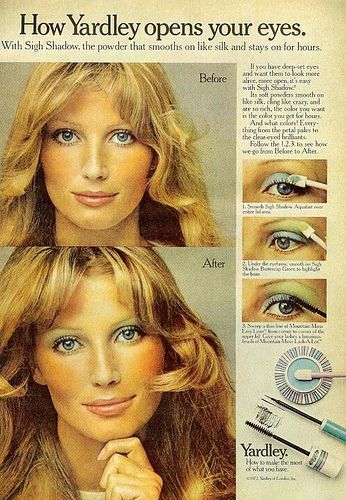
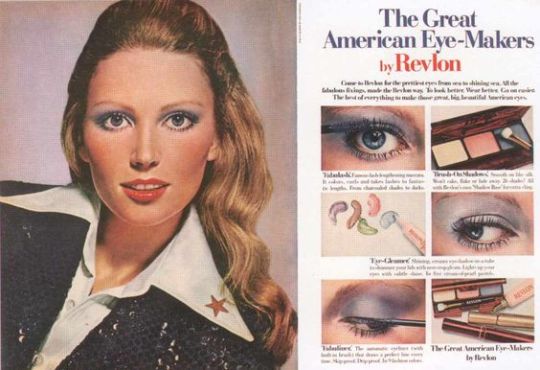
I won't go into insane detail about how 70's makeup worked--maybe in another post, though!
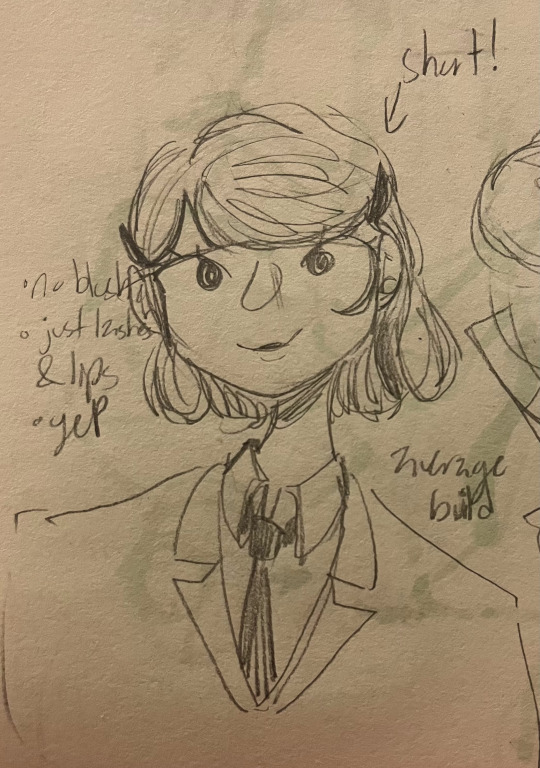
Normal Gal!!
Sorry for such a more low-effort drawing haha. Didn't even get her hair the way I wanted to...
She's also ! utterly average! Which is the point I think haha. She wears a similar outfit to canon with an office skirt that doesn't hug her form much and tights with a pump potentially like this
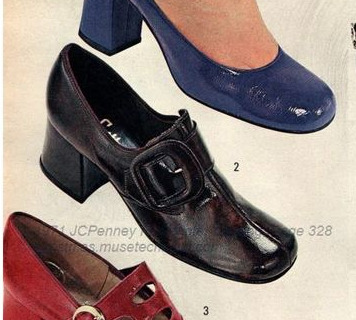
She doesn't wear any make-up other than mascara and a lip-gloss :} there is no blush/skin/eye definition to keep that sorta flat/off feel c!normal guy has.
Her hair is inspired by this! I didn't draw it totally properly, but it's rather short with two clips on the side and asymmetrical to keep the same gestures as C!NG

Hope this was at least to fun to read ^^! Will definitely be toying with their designs etc more in the future!
63 notes
·
View notes
Text
Robe à la Française, Part II
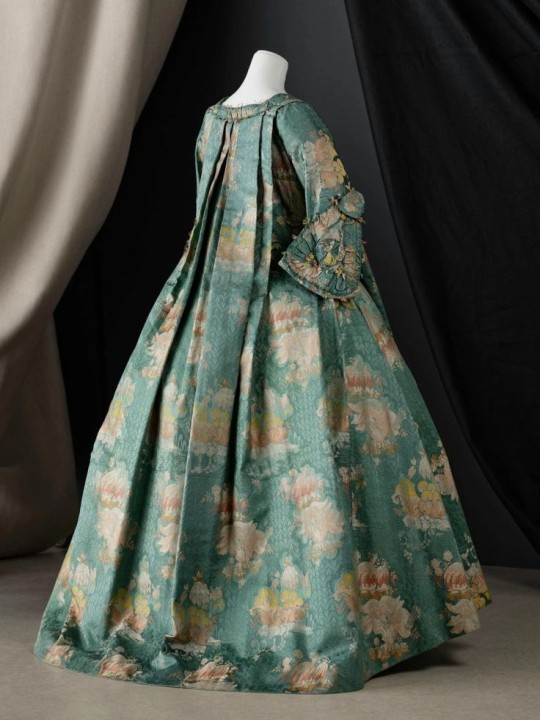
Fig. 1: Robe à la française • 1730-1740 • © Stanislas Wolff / Paris Musées, Palais Galliera
When I was researching the Rococo fashion era, I collected so many images and I have to share some of my favorites. It's not so much the style of the Robe à la Française that I like (though I do very much like the box pleats and drape of the back) but the fabrics, colors, and patterns. Fig. 1 shows a gorgeous print in a beautiful color combination. Such a print for a dress today wouldn't work very well, as contemporary dresses don't have the volume of the 18th century styles, nor the lovely draping in the back of the Robe à la Française.
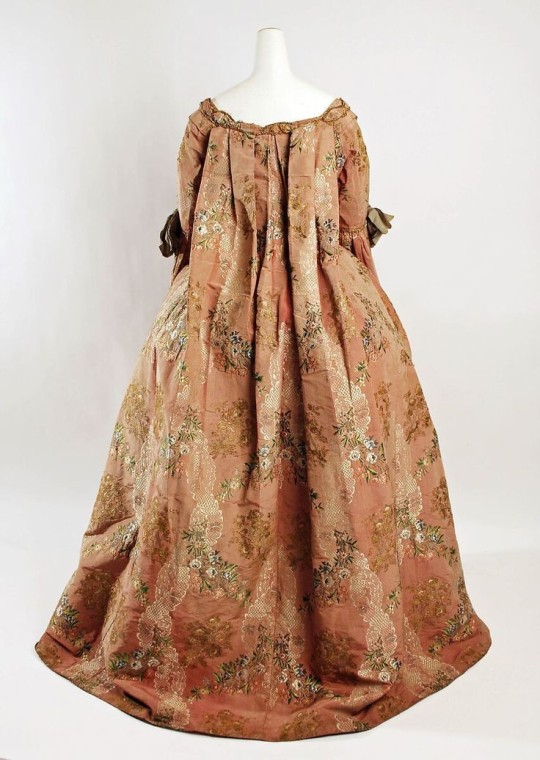
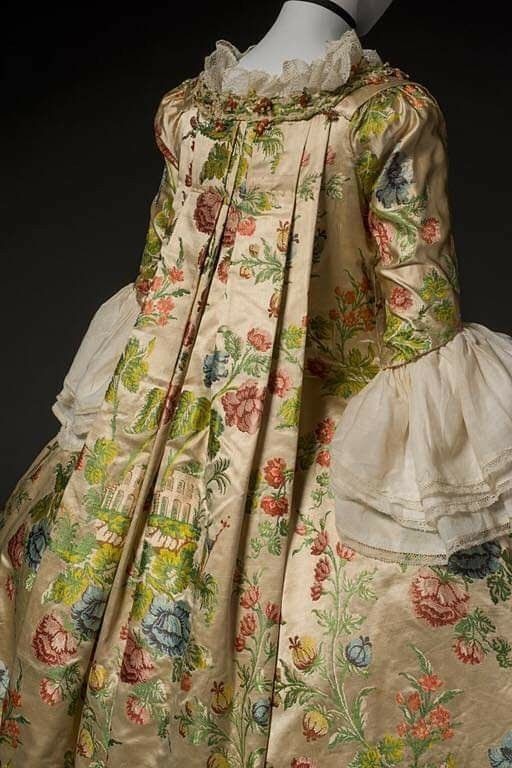
The Robe à la Française was derived from the loose negligee sacque dress of the earlier part of the century, which was pleated from the shoulders at the front at the back.
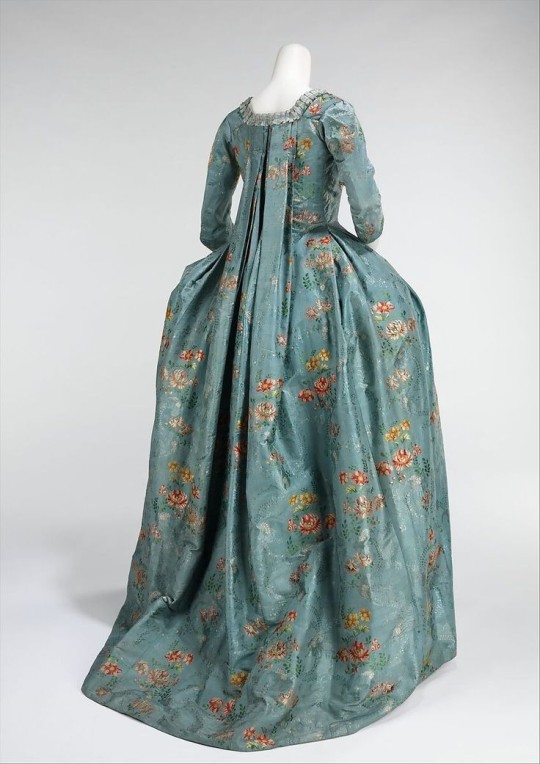
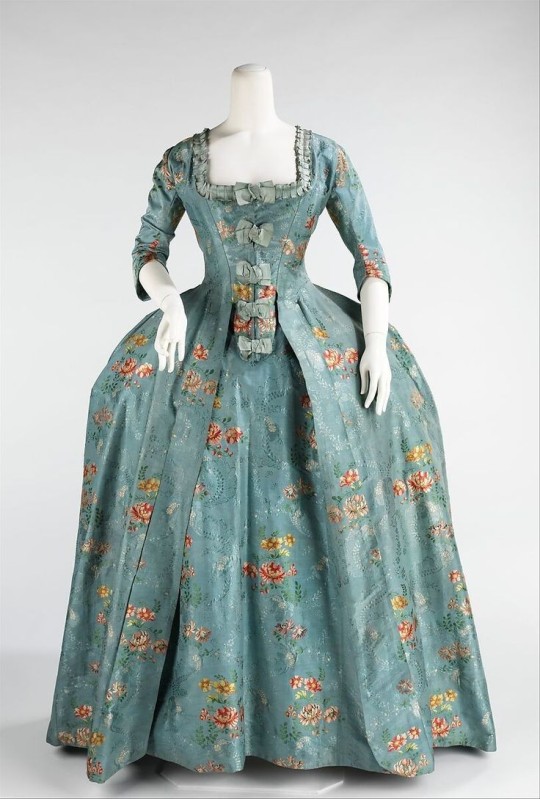
Metropolitan Museum of Art • 1760-70 • Silk, cotton
The silhouette was achieved with a funnel-shaped bust joining wide rectangular skirts. The wide skirts were supported by panniers and hoops constructed from cane, metal, and baleen. Fig. 2 shows a portrait sitter wearing a Robe à la Française with a contrasting underskirt.
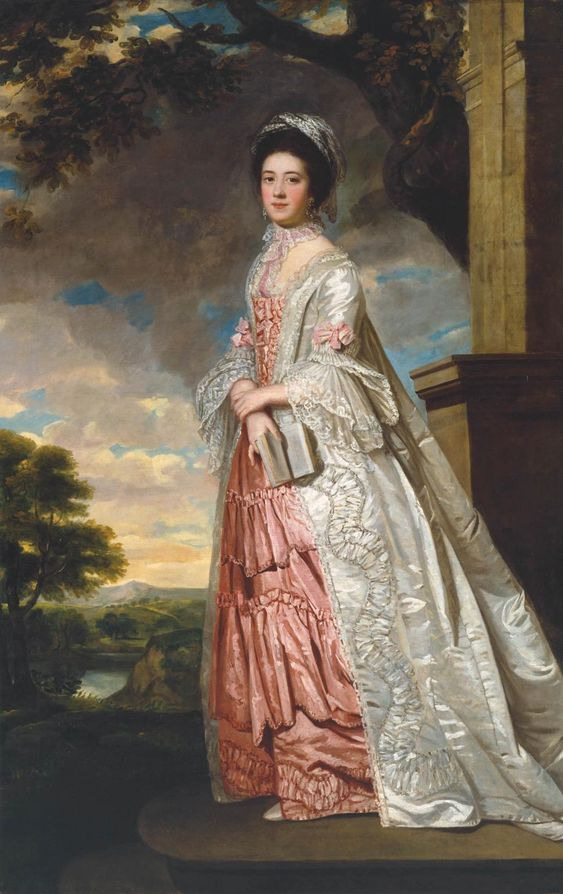
Fig. 2: Artist unknown (British). Mrs. Cadoux, ca. 1770
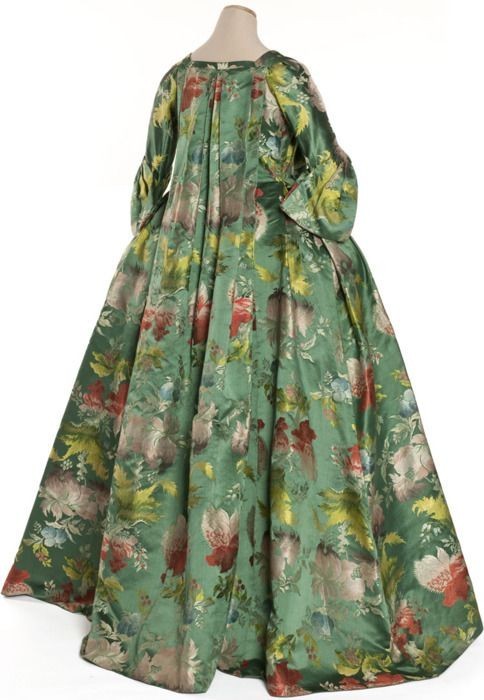
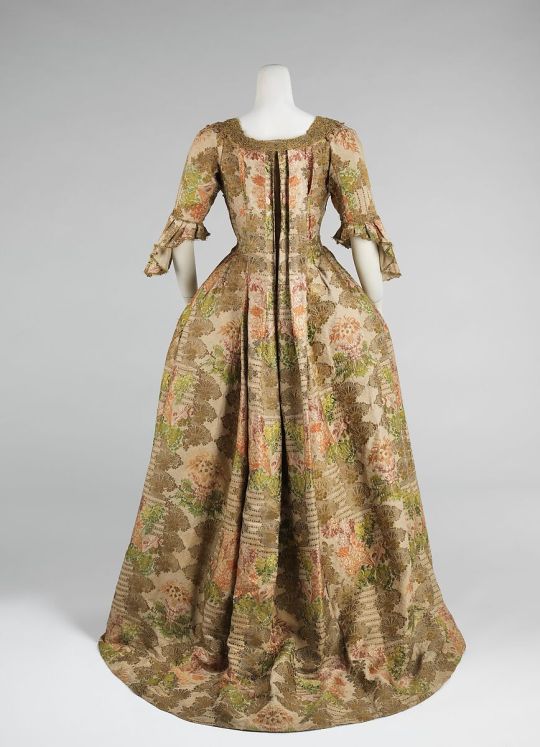
#art#portrait#fashion history#georgian fashion#rococo era fashion#robe à la française#1700s fashion#women's fashion history#18th century dresses#the resplendent outfit blog#sacque dress#metropolitan museum of art fashion Institute#textile patterns#fashion blogs on tumblr
39 notes
·
View notes
Text
Goth and It's Subcultures
A subculture is often associated with subgenres of music. Subcultures are built around the beliefs and political views of a group of people who share an interest in the same thing. A subculture is a smaller and more specific group of a culture for example Goth, Punk, Metalheads, Hip Hoppers, Hipsters, etc. In this I will be talking more about the Goth based ones.
Disclaimer, I myself am not Goth, I do enjoy the music, but I just don't consider myself Goth. However, I absolutely adore the style, sound, and history of it all. So of course, if you are actually Goth or there is something in here, I got incorrect, please let me know! This does not include every subculture but instead my favorites and the ones I’ve done the most research on. Victorian Goth, Bubble Goth, Deathrock, Gothic Lolita, Nu goth, and I’m sure a few others are all the subcultures I haven't wrote about/done enough research about yet.
Goth itself was inspired by Punk fashion, the Punk movement beginning mid 70s and Goth rising and gaining popularity from mid 70s-80s. Not only inspired by Punk but also; gothic literature, horror films, vampirism, religious imagery, Catholicism, and Egyptian mythology which is where the common and famous ankh cross comes from, often seen in Goth fashion as belts, earrings, necklaces, etc. Goth, especially traditional and romantic, often uses dark metaphors for beautiful things, such as cannibalism for love, death for eternity and peace, decaying for passage of time, shadows for mystery, hunger for desire, I could easily go on. Yes, fashion can be a big part of it, but beliefs are more important. Even if you're a Baby Bat or don’t/can’t dress Goth as long as you aren’t a bigoted fuck and enjoy the music, you’re perfectly fine.
It's common for subcultures to take inspiration from others or blend them together. For example, a subgenre Riot Goth coined by Jessicka from Jack Off Jill was invented in the 90s. It took the sound of Goth Metal and combined it with the lyricism and topics of Riot Grrrl, a Punk subgenre focused on the feminist movement.

The Traditional Goth look is in my opinion a mix of Victorian and the New Wave look, think David Bowie, but in darker or all black colors. Messy/Bats nest hair, and androgynous clothing, a common look in plenty of subcultures. No dividing by gender but instead simply style. Often paired with ankh, silver jewelry, rosaries, or occultish jewelry as well.
Romantic Goth, very similar to traditional but more deep reds, maroons, purples, and such. Most of the time with a more feminine look fishnets, lace, corsets, gloves, long flowy skirts, and leather is Romantic Goth. Despite the feminine look being more common for the Romantic Goths that isn't to say men can’t dress that way either often in blouses, cravats, ascots, vests, tailcoats, and trousers. The Romantic Goth definitely plays more into the vampiric look
Another is Mall Goth which took fashion from the Gothic cultures and subgenres from Metalheads and specifically Industrial Metal, Nu Metal, and even some Emo. Mall Goths are called that from their Hot Topic style from the 90s-2000s they were more of Metalheads who dressed Goth for the aesthetic it's often blamed for the death of Trad Goth and the commercialization of Goth.
Industrial Goth was all about the dystopian look and sound, with futuristic style and electronic music. Often seen in tactical gear with a tech inspired look. Very similar to Cybergoth but instead of bright colors and Raver inspired clothing it's more about the tech look, of course metallics and such are still being used along with platforms. A big difference between Cyberpunks and Industrial Goths is that while Cyberpunk is about being anti establishment, how high tech and low life the future seems. While Industrial Goth is more about romanticizing/accepting the mechanical and techy aspects of industrialization, and dehumanization of the dystopian society.
Then Cybergoth sometimes mixed up Industrial Goth, a similar fashion concept all black with pops of color but Cybergoth takes it to the next level mixing it with raver clothes/culture often with brightly colored hair/hair extensions as well as colorful steampunk looking goggles and masks. Often called Gravers(Goth Ravers) seen in pvc, reflective fabrics, neons, and platforms. These Gravers took inspiration from Cyberpunk, Rave, and Goth fashion/culture.
Another one of my favorites is Gothabilly, combining the fashion and sound of Rockabilly but adding a Gothic twist. The subgenre made most popular by The Cramps and Skully Records in the 90s. The style is very similar to Rockabilly focusing on reds, purples, blacks and occasionally whites. Polka dots, plaids, checkers, cherry prints, swing dresses, leather jackets, bandanas, vintage style sunglasses, combat boots or platform heels. Men with very 50s style hair typically slicked back black hair with streaks of color occasionally.
#give constructive criticism please my friends are too nice 😭#goth#jack off jill#gothic#cyber goth#gothabilly#goth subculture#alternative#alternative goth#alternative subcultures#romantic goth#trad goth#traditional goth#mall goth#goth fashion#rockabilly#raver#industrial goth#industrial fashion#psychobilly#riot goth#baby bat#alt history#riot grrrl#vintage#punk
21 notes
·
View notes
Note
So I saw that the HP AU takes place in the 90s and not the 70s. 😅 Woops, looks like I read it wrong.
So let me redo my research. *ahem* Loose, oversized clothing and jeans were the fashion trend back then. Hhhmmmm, has slytherin!Gojo ever thought about having Y/N wear his robe? You know kinda like how a girlfriend would wear her boyfriend’s hoodie type of thing?
well tbh i think that muggle fashion choices translate pretty well to the wizarding world
like in the movies hermione is usually wearing jeans and a sweater but i think most of the students would wear that during their time off
but because slytherin!gojo is so prim and proper he usually just wears slacks and a looser fitting button up on his off days, so when it comes to how he thinks about readers outfit choices he regards them as pretty usual
and for his robe i would see him as wanting her to wear his robes if she was in another house, but because they're both in slytherin he doesn't really see the point (also if they switched he'd be stuck with her robes and they would probably a little short for him)
buttt i will say without actually saying what it is that there is another thing that slytherin!gojo has that he wants reader to wear that will be in the second part
20 notes
·
View notes
Text
Twilight Town: The Frankenstein Twins
Sometimes I got to remember Frank and Len have been and always will be my favorites of the show and I think they’re the most popular aside from Misery and Ruby. I even drew a sketch of them from memory and now Twilight Town exists.
And since I have grouped both twins together. It’s gonna be a long one for the monster analysis. Especially since they’re based on a monster with a LOT of lore and background so let’s get started now
Why is the design part so damn long??
I always saw the twins with two different styles, especially in the Rock aesthetics. Frank would be the 50s-70s style of rock. The checkerboard and pomp hair definitely played a part there. It’s why he got jackets and more biker/greaser type style (growing up my mom used to do a happy Days musical). Len is the punk era of rock. Messy hair, flames, and just extra edge. His fashion was experimental and less clean as his brother. Aside from that I gave them different instruments. Frank has “Devil’s trophy” a golden bass and Len has “Tombstone” a tombstone styled guitar.
So when I was making the twins. The original concept had them still conjoined in adulthood. In fact most of my early sketches had them like that. They could only split apart with magic. I even had a storyline that they asked Jackie to do that and they would live non-conjoined for 24 hours. In the end, the decision would be that they would split as adults via surgery.
The choice of making them separate was the multiple struggles that would come once they’re adults. Relationships would be complicated, one sibling would have different ones compared to the other, and ultimately, they couldn’t blend in pretending to be a costume which I already made a post about, almost getting killed by humans.

The Modern Prometheus
I think I got the idea that Frank and Len were Frankenstein monsters from talking with my friend who is also the co-creator for ENAF. Honestly there was a lot of details that would work for that concept. Frankenstein’s monster sometimes gets his names shortened to be just Frank or Frankie, different illterations had him green (on rare cases blue), and even the visibility of stitches (which took me 13 years to see). So once I had them be the sons of Frankenstein’s monster (which is actually Frank 1) and Bride of Frankenstein (who is named Eliza) I did as much research and story writing about the whole family as I could. It’s why they have white hair streaks, hate fire, covered in stitchesand are affected by electricity. They get shocked and burned just as much as misery sometimes lol.
With the idea that they can eat humans is simply the fact that they’re undead monsters, almost in similarity to zombies. They’re far more intelligent and controlling than them since they have active non decaying brains and creations are different. The two have a rule with Ruby that they can only kill and eat humans who harm or attack them so they don’t just go by eating them all the time.
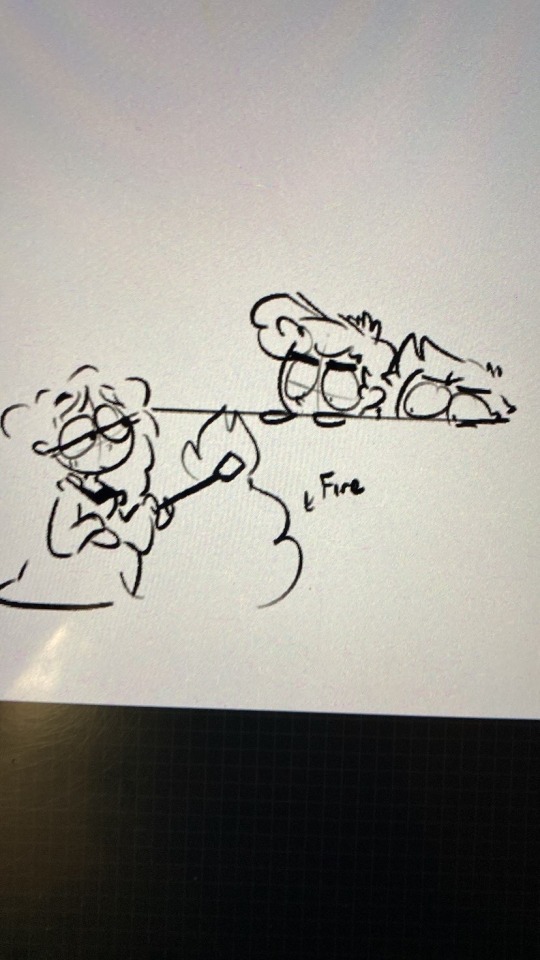
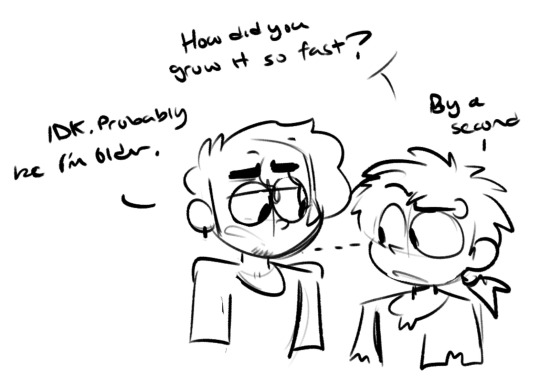
Background and Origins
There was a man named Victor Frankenstein. He lived nearby a monster sanction. Rather than react in fear, he was friendly to them which led to his exile from humanity. With no family to have, he created two monsters via science, Frank and Eliza Frankenstein. The couple were happy with Victor, even taking up careers in music becoming popular musicians with Victor’s support. (Oh and I have designed both parents. *yay*)
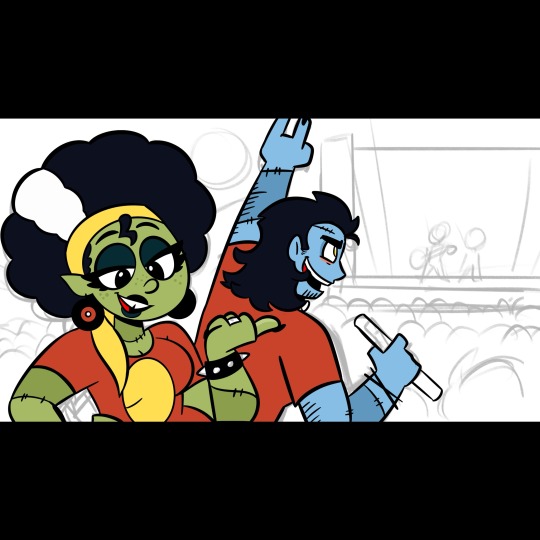
At some point, Eliza had twins who were unfortunately born stillborn due to lack of vital body functions. Since this would be likely the only chance the monsters could reproduce, Victor sewn the twins together and reanimated them back to life. The twins would be named Frank and Len and would live most of their childhood with their family before moving to Twilight Town as teenagers with a growing band.
When they were 18, they decided to undergo a procedure done by Victor that would give them two complete bodies by using their dna to replicate their bodies. After that they were no longer conjoined but no matter it, they still prefer to be close.
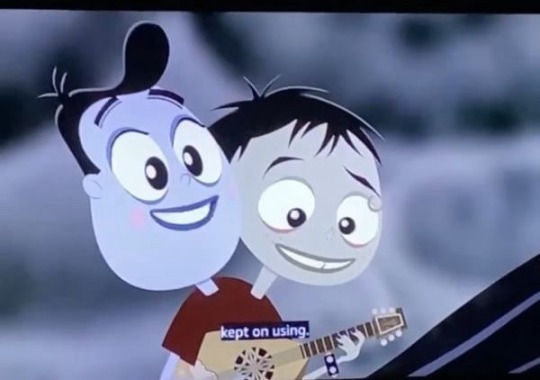
Next Up: Polyphemus
27 notes
·
View notes
Note
Wait is her psychiatrist Hannibal?!?!
Hey!! Something like that 🙂 her psychiatrist is heavily inspired by Hannibal.
I really enjoyed Silence of the Lambs and the Hannibal series and movies. I haven't read the books which I really should. But I am super interested in Hannibal as a character. I'm also a firm enjoyer of the cannibal trope as both a metaphor for love but also exploitation of power/ego.
Shes a redhead with a 70s blowout. Think curtain bangs but this is another image that is very her energy.

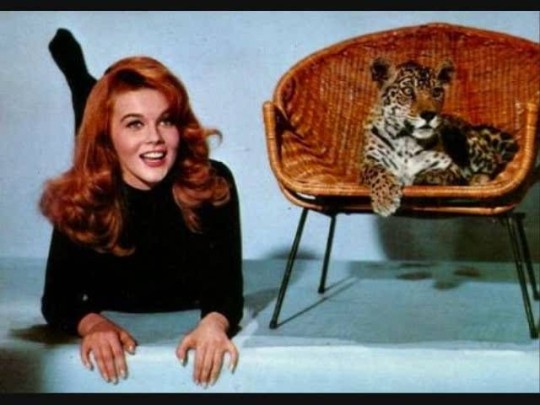
Amulya's psychiatrist is a woman by the name of Milana Spezia Deodato. She is an Italian woman that originates from a family of werewolf hunters. From a young age she was raised to be a hunter and it caused her to develop some peculiar behaviors and habits as a result. On the outside though, she is a very intelligent woman who at most seems a little eccentric and polite but snooty. She is also known as a very good cook! She was hired in the 1970s by Hellsing via a recommendation l from Sir Islands.
In my lore, I have it as Islands beinf part of the roundtable but his family owns and runs hospitals. Milana did her years of residency at one of the hospitals that the Islands operated. She obviously made an impression with the family and Islands himself for her background in monster hunting and how she was researching how to apply it to her field of psychiatry. Islands suggested her to Arthur for a new department of Hellsing that was focused in rehabilitating individuals who had experienced encounters with the supernatural. This was in hopes of keeping the operations of Hellsing from the public more and that people could return to normalcy in an easier fashion. Some people who have those experiences never exactly recover.
For Milana, she was given people to research and treat, while she got a good paycheck. But it also gave her plenty of food. Her cannibal habits are not known by anyone in Hellsing(aside from Walter ofc but listennn). Anybody she takes are simply seen as having fallen in battle and missing. She was always very good at covering her tracks.
Arthur handing Amulya to her was out of desperation because realistically, Amulya couldn't express the worries she had to any psychiatrist. It would put Hellsing at risk. Additionally, it gave Amulya someone in-house to talk to. If she had an episode, she always had immediate support through someone with actual experience and licensing.
Amulya came to rely on her and was being treated properly for some time. Many of her lapses was due to her own spiraling.
Milana had varying thoughts on her. She found her intriguing and a good ticket to get a look at what Arthur is like behind closed doors. She found herself very entertained by her dynamic between Amulya and Walter. She knew of his feelings from observing them both. It wasn't neccesarily wanting to match them up but more that she was interesting in seeing what would happen. The possibilities, the reactions of them all. She did eventually get bored of the situation. Milana did know Amulya was going to commit suicide before it occurred. It was how it affect Arthur, Walter, and anyone else in the organization. She got what she wanted, though she was out under alot of pressure by Arthur after the fact but Amulya's death was seen as her mental state getting the better of her.
After one of her attempts, Milana did start doing sessions with Walter. It was a conflict of interest but they couldn't exactly afford anyone outside of the organization. Their sessions was ordered by Arthur so Walter couldn't exactly refuse. Walter was never a fan of her. She had a habit of prodding anyone she talked to so he felt like he was always under a microscope. He never wanted to be analyzed while all she wanted to do was analyze him. Milana knew he was involved in an organization separate from Hellsing while he found out she was a murderer and cannibal. He was disgusted with her despite his own actions. Really they were two fucked up individuals that found a messed up but hesitant (on Walter's side) kinship with one another.
Milana remains in Hellsing till after the battle of London where she moves to America for a new start and new roster of meals.
Her and Walter's dynamic is this:
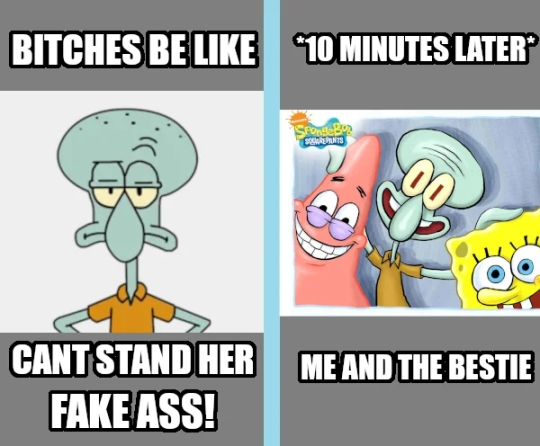
#hellsing#hellsing ultimate#hellsing oc#walter c dornez#walter dornez#amulya hellsing#hellsing organization#Milana Deodato#yall caught me on the hannibal stuff#her office actually has a tonnof fairytale books#she has a weird love for them and often uses them for allusion and helping people understand their experiences#i might go into more of her past but its supposed to be kinda mysterious#her philosophy regarding cannibwlism is basically#“if they can eat us then it should only be natural for me”#she sees herself as honestly more human than the majority of people#paet of why she is still human!#she has never given that up but she sees herself as above people#thank u for the ask!😭💖#im honestly so excited i got to talk about her#walter hates talking to her lmfao#there are big differences between her and hannibal#milana has never really cared deeply for anyone unlike how hannibal had his sister#also she did a ton of experimental treatments on ammy#girl has done some mushroom tea
7 notes
·
View notes
Note
Fic authors self rec! When you get this, reply with your favorite five fics that you've written, then pass on to at least five other writers. 🩷
Oh my god Katie this is SUCH a hard question. I have published 70 works on ao3.
Here's what I narrowed it down to:
Pegging and other adventures (Daniel Ricciardo/Max Verstappen, VERY explicit) I think I found something cool and funny to say in a way a lot of my other fics aren't (I am generally a deeply sentimental person and that shows in my writing)
Live in five (Daniel Ricciardo/Max Verstappen, nondriver twitch streamer Max, nonbinary Max) I think this captures something really special in writing the process of falling in love online
Regret (Travis Konecny/Nolan Patrick, regency A/B/O au) I had a lot of fun with the world building of and logistics of inheritance in this and I am also just very proud of the writing in it. I think I did well capturing the vibes of the regency era. I spent a lot of time doing research for this one.
Where the light went (Nico Hischier/Travis Konecny/Nolan Patrick, soulmate au, nontraditional soulmates) I didn't write this one by myself but part of what I am so proud of about this fic is how my co-author and I managed to build a cohesive writing style throughout. This is another where I love the world building I did.
And now, for my favorite fic I have ever written or will ever write
Unchained melody (Travis Konecny/Nolan Patrick, rule 63, f/f, 1950s au) I wish I had more eloquent things to say about this fic but I think this is my magnum opus. I loved the story telling. It's deeply personal and I poured my whole heart and soul into this Google doc. I think I really captured something of the desperate loneliness of being in a marriage you don't really want to be in even if you don't know that at the time that it's happening. I spent hours and hours researching for this fic from 1950s fashion and recipes to crop planting schedules to the history of swimming pools in Winnipeg. I just put a lot of love and care into this one and I think it shows. Please, even if you have never cared about hockey, read this fic. It's deeply important to me.
#my fic#f1 rpf#maxiel#max verstappen#daniel ricciardo#hockey rpf#travis konecny#nolan patrick#tk/nolan#nico hischier#tk/nico/nolan
37 notes
·
View notes
Note
do you have any tips on writing an au? normal fics i can usually handle but i’m working on a kunichuu grease au and i’m finding it quite difficult.
hiya! thanks for asking :3 also good luck with that, that seems like so much fun omg; feel free to send when you start releasing, i'd love to check it out!
ill be using splinters as my example here purely because thats closer to what you're trying to do (movie/musical as reference)
this is going to be long as fuck because i tend to ramble and go into detail, so im adding a read-more. i sincerely hope this helps because i know its a LOT (potential spoilers for splinters included)
1. The Foundation
when i first started working on splinters, it started with a lot of idea bouncing. who would suit what role? why would that role work for them? originally, i had looked at dazai as jd and chuuya as veronica, or dazai as veronica with fyodor as his jd.
then, i also started thinking about story 'beats'. to be clear about what that means, i like to think of different parts/scenes that i need/want to hit, and kind of the order if possible. this usually intertwines with the original story-- in your case, grease.
all this starts falling into the next step:
2. Research
it may not be entirely apparent, but i did (and still do) a FUCK TON of research for splinters. by choosing to have multiple source materials to base your work off (both bsd AND grease), depending on how close/accurate you want to be, you're going to want to get in touch with the material.
you've mentioned grease-- i'm assuming you're doing this based off the movie (love the movie. need to rewatch). what i personally do with heathers the movie is that i watched it the entire way through first to refresh myself with the material. it might help you to take notes about different characters, ideas, plot lines. i found a copy of both scripts online in case i wanted to see about throwing an iconic line in during an important scene without diving through the whole movie to find it.
i dont know HOW historically accurate you want to go with your fic--you may be choosing to explore the concept of grease rather than the actual setting itself-- but grease takes place in the late 50s, TECHNICALLY early 60s (movie itself came out in the late 70s) (my mom LOVED it when it came out). so, you may want to do some basic research: fashions/trends of the time (this has gotten harder to search online, you may want to even run to the library and find some books if possible)? societal norms? what did normal teens do during that time? did they have arcades, did they go to restaurants, what was the average place they hung out at?
a lot of times, i have to double-check if some of the stuff in splinters is period accurate. each decade has different lingo, slang, and general information that was normal during it. hell, looking back at the 2010s versus 2020s, if you were to write a story during, saying, 2011, and have your characters saying "slay" and "yas queen" and "road work ahead, uh yeah i sure hope it does", i regret to inform you that that will NOT be accurate, as those phrases are more late 2010s + that vine came out in 2016. now, could you quote/potentially reference these things? absolutely! but you have to be more strategic about it.
ALSO. look up fun trivia about your source material! you know where i got my title from? its the english translation of the italian name for heathers. im not even kidding. also, mix and match material! hell, even throw references in to other material! i had my mean girls reference in there! because its bsd, i like to throw in authors i like from time to time where they fit!
another silly one: what music came out around that time, playing on the radio? HOW did they listen to music? i specifically listen to a 1989 top hits playlist when im trying to figure out what songs might be playing on the radio while my characters are driving-- and even THEN i still will look up specifically when that song came out, because i made the choice to be horribly specific with my timeline.
on that note:
3. If you can, DON'T SET A SPECIFIC MONTH/DAY/ETC.
i made my choices. do i regret them? YES. is it still fun to work with? absolutely, but also the heathers timeline is lowkey a mess and you could simultaneously claim it takes place in 2 months or several.
honestly, avoid specifics. having to keep track of a timeline is an absolute bitch, and it's going to make your life a lot harder, because then, you HAVE to make sure it all matches up. if i say that kunikida went and got his glasses in march, i cant say that his glasses are brand new in may (this is a hypothetical example).
timelines suck. unless you think you can dedicate the time and energy to keeping with one, don't do it.
4. OUTLINES.
i've been writing fanfics for years, which is wild to me. i was writing fanfics in single digits (didn't even know what fanfics were). one thing that i have especially found useful with splinters is to make outlines for where you want the story to go.
let me break it down for you:
you're gonna have MULTIPLE outlines, and they are NOT set in stone. they are guidelines for you to use so that you're not sitting there going "shit i don't know what to do next". they may be scenes you want to have in the fic. they may be important plot points. they may be absolutely stupid shit that youre like "if i dont get this in here i will cry" (diarrheazai is a threat that i intend to keep)
FIRSTLY. try making a general outline for your whole fic. you don't need super specifics, but think of what events occur during grease. in it, danny and sandy meet in the summer before their senior year. sandy meets and joins the pink ladies. there's a dance competition. danny and sandy fly off in a car into the sunset. etc. TO BE CLEAR, you don't have to keep all the details! it is your story, and what you want to do with it! having that structure can be helpful when you start though.
THEN. once you have that general outline? start trying to plan out chapters. you dont have to make outlines for them all at once. more often than not, i'll sit there before i start a new chapter just trying to outline what'll happen in it. this helps a LOT on multiple levels. i'll provide an example of what that can look like below (SPOILERS IF YOU'RE NOT UP-TO-DATE WITH SPLINTERS):

(the blacked out bit is spoilers, everything else should be clear to see)
a quick explanation: i dedicate a small document to outlines for each chapter. as you can see, with chapter beats, i have diff things i want to try to hit. the stuff highlighted in green is stuff that i come back post-chapter to confirm i hit. sometimes, if it's not EXACTLY in there, i'll leave a note in bold (ex: WAS MENTIONED).
but you can kind of see what im talking about here. i have some things that im trying to knock out per chapter.
other things in my doc to outline:

yes i talk to myself in my notes.

i highlight different scenes according to their relevance to certain characters sometimes; i add scenes in where i need to, and then ofc as you see ill go into detail about specific scenes. and AGAIN these are not set in stone. for example:

as you can see, shit changes over time. that boiler room make-out scene during the homecoming pep rally appeared in ch 11. i did not make this sequence fyodor's pov.

sometimes? i just dont have the time or energy to write shit/dont think its relevant to the plot. good bye, corn maze. you'll be remembered in my thoughts and my outline

also try to have fun while outlining. it doesnt need to be something serious. literally my outlines are a mix of dialogue, scenes, my own thoughts, etc. get silly with it. this is supposed to be fun and enjoyable!
ANOTHER THING:
5. LOOP SOMEONE INTO OBSESSING OVER THIS WITH YOU.
i was inspired by ardeidae to write splinters, and i have successfully trapped them in splinters world for almost an entire year now. by both of us loving it, we can keep ourselves focused on it.
what also helps is bouncing ideas off other people. me and lu have had conversation after conversation after conversation about different plot lines, scenes, etc. sometimes, i don't know what to do and i will ask lu (or other people) for advice about the progression.
you may have also heard of the engineering rubber duck method. if you're unfamiliar, engineers will sit there with a rubber ducky by them and talk to it about what they're working on until they figure out what they need to do. sometimes, just ranting about the fic is enough to help you spawn ideas about what to do next.
OH also
6. If you do end up making a timeline? Have a calendar on hand.

this is no longer 100% accurate to the progression of splinters and the chapters, but it helped a LOT. laying it out like this can make one hell of a difference. im a visual person, so doing this helped. also, can help you keep track of holidays and shit. if you want to give your characters a day off from classes, check a school calendar for holidays. be like "uhhhherrrr yeah they're taking, uhhhh veteran's day off" yk
7. Write, but don't force it.
splinters doesn't have an actual updating schedule because i work on it at my own pace, and update once i finish a chapter. now, i usually finish chapters after a month, but i don't say it updates on x day. don't box yourself in unless you truly think you can handle it. some people are very good about schedules. i am horrible at them, bc ykw? LIFE HAPPENS.
when im in the mood, i write. i will sit for HOURS and just write. grab some snacks, maybe pop on some music, get a buddy to sit with you, but just go for it. sometimes, i'll pull a 25-10 method-- 25 minutes of writing with ten minutes of relaxing and bullshitting--and that helps me not burn out as quickly. but honestly, you cant always brute force it.
have i had to brute force it sometimes? yes. you will get stuck. it naturally happens. sometimes, a scene fucking sucks and you're like "i hate this scene but it HAS to be in there" (if it doesnt fuck that shit. throw it out. blegh) sometimes, you need to mix things up to make it more appealing to you, because i am of the belief that the readers can tell when you're not invested in a scene. if im writing a scene and its going slowly and i just want to get it done? the quality's going to go down, and i KNOW it. so, i evaluate. what do i need to do for this scene to work? can i add something to help? do i need to just rewrite the bastard and call it a day?
and sometimes? you can just go ahead and put a little "<'scene'>" in and move on. depending on how much your fic relies on that scene, that won't always work, but sometimes, you just gotta leave it and come back to it. you can also do that with certain dialogue/details. if you're trying to get your characters from point A to point B, don't shove them there if they run out of gas. make a detour, and see what happens.
eerrrrrrr yeah, i THINK that's the majority of the advice i can give? sorry that that's a lot, but uhhh hope it helps! :')
#wild that people would want advice from me but hopefully itll help#good luck with your fic anon! it seems like fun!
8 notes
·
View notes
Text

I.3.5 What would confederations of syndicates do?
Voluntary confederation among syndicates is considered necessary by social anarchists for numerous reasons but mostly in order to decide on the policies governing relations between syndicates and to co-ordinate their activities. This could vary from agreeing technical standards, to producing guidelines and policies on specific issues, to agreeing major investment decisions or prioritising certain large-scale economic projects or areas of research. In addition, they would be the means by which disputes could be solved and any tendencies back towards capitalism or some other class society identified and acted upon.
This can be seen from Proudhon, who was the first to suggest the need for such federations. “All my economic ideas developed over the last twenty-five years,” he stated, “can be defined in three words: Agro-industrial federation” This was required because ”[h]owever impeccable in its basic logic the federal principle may be … it will not survive if economic factors tend persistently to dissolve it. In other words, political right requires to be buttressed by economic right”. A free society could not survive if “capital and commerce” existed, as it would be “divided into two classes — one of landlords, capitalists, and entrepreneurs, the other of wage-earning proletarians, one rich, the other poor.” Thus “in an economic context, confederation may be intended to provide reciprocal security in commerce and industry … The purpose of such specific federal arrangements is to protect the citizens … from capitalist and financial exploitation, both from within and from the outside; in their aggregate they form … an agro-industrial federation” [The Principle of Federation, p. 74, p. 67 and p. 70]
While capitalism results in “interest on capital” and “wage-labour or economic servitude, in short inequality of condition”, the “agro-industrial federation … will tend to foster increasing equality … through mutualism in credit and insurance … guaranteeing the right to work and to education, and an organisation of work which allows each labourer to become a skilled worker and an artist, each wage-earner to become his own master.” The “industrial federation” will apply “on the largest scale” the “principles of mutualism” and “economic solidarity”. As “industries are sisters”, they “are parts of the same body” and “one cannot suffer without the others sharing in its suffering. They should therefore federate … in order to guarantee the conditions of common prosperity, upon which no one has an exclusive claim.” Thus mutualism sees “all industries guaranteeing one another mutually” as well as “organising all public services in an economical fashion and in hands other than the state’s.” [Op. Cit., p. 70, p. 71, p. 72 and p. 70]
Later anarchists took up, built upon and clarified these ideas of economic federation. There are two basic kinds of confederation: an industrial one (i.e., a federation of all workplaces of a certain type) and a regional one (i.e. a federation of all syndicates within a given economic area). Thus there would be a federation for each industry and a federation of all syndicates in a geographical area. Both would operate at different levels, meaning there would be confederations for both industrial and inter-industrial associations at the local and regional levels and beyond. The basic aim of this inter-industry and cross-industry networking is to ensure that the relevant information is spread across the various parts of the economy so that each can effectively co-ordinate its plans with the others in a way which minimises ecological and social harm. Thus there would be a railway workers confederation to manage the rail network but the local, regional and national depots and stations would send a delegate to meet regularly with the other syndicates in the same geographical area to discuss general economic issues.
However, it is essential to remember that each syndicate within the confederation is autonomous. The confederations seek to co-ordinate activities of joint interest (in particular investment decisions for new plant and the rationalisation of existing plant in light of reduced demand). They do not determine what work a syndicate does or how they do it:
“With the factory thus largely conducting its own concerns, the duties of the larger Guild organisations [i.e. confederations] would be mainly those of co-ordination, or regulation, and of representing the Guild in its external relations. They would, where it was necessary, co-ordinate the production of various factories, so as to make supply coincide with demand… they would organise research … This large Guild organisation… must be based directly on the various factories included in the Guild.” [Cole, Guild Socialism Restated, pp. 59–60]
So it is important to note that the lowest units of confederation — the workers’ assemblies — will control the higher levels, through their power to elect mandated and recallable delegates to meetings of higher confederal units. It would be fair to make the assumption that the “higher” up the federation a decision is made, the more general it will be. Due to the complexity of life it would be difficult for federations which cover wide areas to plan large-scale projects in any detail and so would be, in practice, more forums for agreeing guidelines and priorities than planning actual specific projects or economies. As Russian anarcho-syndicalist G.P. Maximov put it, the aim “was to co-ordinate all activity, all local interest, to create a centre but not a centre of decrees and ordinances but a centre of regulation, of guidance — and only through such a centre to organise the industrial life of the country.” [quoted by M. Brinton, For Workers’ Power, p. 330]
So this is a decentralised system, as the workers’ assemblies and councils at the base having the final say on all policy decisions, being able to revoke policies made by those with delegated decision-making power and to recall those who made them:
“When it comes to the material and technical method of production, anarchists have no preconceived solutions or absolute prescriptions, and bow to what experience and conditions in a free society recommend and prescribe. What matters is that, whatever the type of production adopted, it should be the free choice of the producers themselves, and cannot possibly be imposed, any more than any form is possible of exploitations of another’s labour… Anarchists do not a priori exclude any practical solution and likewise concede that there may be a number of different solutions at different times.” [Luigi Fabbri, “Anarchy and ‘Scientific’ Communism”, pp. 13–49, The Poverty of Statism, Albert Meltzer (ed.), p. 22]
Confederations would exist for specific reasons. Mutualists, as can be seen from Proudhon, are aware of the dangers associated with even a self-managed, socialistic market and create support structures to defend workers’ self-management. Moreover, it is likely that industrial syndicates would be linked to mutual banks (a credit syndicate). Such syndicates would exist to provide interest-free credit for self-management, new syndicate expansion and so on. And if the experience of capitalism is anything to go by, mutual banks will also reduce the business cycle as ”[c]ountries like Japan and Germany that are usually classifies as bank-centred — because banks provide more outside finance than markets, and because more firms have long-term relationships with their banks — show greater growth in and stability of investment over time than the market-centred ones, like the US and Britain … Further, studies comparing German and Japanese firms with tight bank ties to those without them also show that firms with bank ties exhibit greater stability in investment over the business cycle.” [Doug Henwood, Wall Street, pp. 174–5]
One argument against co-operatives is that they do not allow the diversification of risk (all the worker’s eggs are on one basket). Ignoring the obvious point that most workers today do not have shares and are dependent on their job to survive, this objection can be addressed by means of “the horizontal association or grouping of enterprises to pool their business risk. The Mondragon co-operatives are associated together in a number of regional groups that pool their profits in varying degrees. Instead of a worker diversifying his or her capital in six companies, six companies partially pool their profits in a group or federation and accomplish the same risk-reduction purpose without transferable equity capital.” Thus “risk-pooling in federations of co-operatives” ensure that “transferable equity capital is not necessary to obtain risk diversification in the flow of annual worker income.” [David Ellerman, The Democratic Worker-Owned Firm, p. 104] Moreover, as the example of many isolated co-operatives under capitalism have shown, support networks are essential for co-operatives to survive. It is no co-incidence that the Mondragon co-operative complex in the Basque region of Spain has a credit union and mutual support networks between its co-operatives and is by far the most successful co-operative system in the world. The “agro-industrial federation” exists precisely for these reasons.
Under collectivist and communist anarchism, the federations would have addition tasks. There are two key roles. Firstly, the sharing and co-ordination of information produced by the syndicates and, secondly, determining the response to the changes in production and consumption indicated by this information.
Confederations (negotiated-co-ordination bodies) would be responsible for clearly defined branches of production, and in general, production units would operate in only one branch of production. These confederations would have direct links to other confederations and the relevant communal confederations, which supply the syndicates with guidelines for decision making (see section I.4.4) and ensure that common problems can be highlighted and discussed. These confederations exist to ensure that information is spread between workplaces and to ensure that the industry responds to changes in social demand. In other words, these confederations exist to co-ordinate major new investment decisions (i.e. if demand exceeds supply) and to determine how to respond if there is excess capacity (i.e. if supply exceeds demand).
It should be pointed out that these confederated investment decisions will exist along with the investments associated with the creation of new syndicates, plus internal syndicate investment decisions. We are not suggesting that every investment decision is to be made by the confederations. (This would be particularly impossible for new industries, for which a confederation would not exist!) Therefore, in addition to co-ordinated production units, an anarchist society would see numerous small-scale, local activities which would ensure creativity, diversity, and flexibility. Only after these activities had spread across society would confederal co-ordination become necessary. So while production will be based on autonomous networking, the investment response to consumer actions would, to some degree, be co-ordinated by a confederation of syndicates in that branch of production. By such means, the confederation can ensure that resources are not wasted by individual syndicates over-producing goods or over-investing in response to changes in production. By communicating across workplaces, people can overcome the barriers to co-ordinating their plans which one finds in market systems (see section C.7.2) and so avoid the economic and social disruptions associated with them.
Thus, major investment decisions would be made at congresses and plenums of the industry’s syndicates, by a process of horizontal, negotiated co-ordination. Major investment decisions are co-ordinated at an appropriate level, with each unit in the confederation being autonomous, deciding what to do with its own productive capacity in order to meet social demand. Thus we have self-governing production units co-ordinated by confederations (horizontal negotiation), which ensures local initiative (a vital source of flexibility, creativity, and diversity) and a rational response to changes in social demand. As links between syndicates are non-hierarchical, each syndicate remains self-governing. This ensures decentralisation of power and direct control, initiative, and experimentation by those involved in doing the work.
It should be noted that during the Spanish Revolution successfully federated in different ways. Gaston Leval noted that these forms of confederation did not harm the libertarian nature of self-management:
“Everything was controlled by the syndicates. But it must not therefore be assumed that everything was decided by a few higher bureaucratic committees without consulting the rank and file members of the union. Here libertarian democracy was practised. As in the C.N.T. there was a reciprocal double structure; from the grass roots at the base … upwards, and in the other direction a reciprocal influence from the federation of these same local units at all levels downwards, from the source back to the source.” [The Anarchist Collectives, p. 105]
The exact nature of any confederal responsibilities will vary, although we “prefer decentralised management; but ultimately, in practical and technical problems, we defer to free experience.” [Luigi Fabbri, Op. Cit., p. 24] The specific form of organisation will obviously vary as required from industry to industry, area to area, but the underlying ideas of self-management and free association will be the same. Moreover, the “essential thing … is that its [the confederation or guild] function should be kept down to the minimum possible for each industry.” [Cole, Op. Cit., p. 61]
Another important role for inter-syndicate federations is to even-out inequalities. After all, each area will not be identical in terms of natural resources, quality of land, situation, accessibility, and so on. Simply put, social anarchists “believe that because of natural differences in fertility, health and location of the soil it would be impossible to ensure that every individual enjoyed equal working conditions.” Under such circumstances, it would be “impossible to achieve a state of equality from the beginning” and so “justice and equity are, for natural reasons, impossible to achieve … and that freedom would thus also be unachievable.” [Malatesta, The Anarchist Revolution, p. 16 and p. 21]
This was recognised by Proudhon, who saw the need for economic federation due to differences in raw materials, quality of land and so on, and as such argued that a portion of income from agricultural produce be paid into a central fund which would be used to make equalisation payments to compensate farmers with less favourably situated or less fertile land. As he put it, economic rent “in agriculture has no other cause than the inequality in the quality of land … if anyone has a claim on account of this inequality … [it is] the other land workers who hold inferior land. That is why in our scheme for liquidation [of capitalism] we stipulated that every variety of cultivation should pay a proportional contribution, destined to accomplish a balancing of returns among farm workers and an assurance of products.” In addition, “all the towns of the Republic shall come to an understanding for equalising among them the quality of tracts of land, as well as accidents of culture.” [General Idea of the Revolution, p. 209 and p. 200]
By federating together, workers can ensure that “the earth will … be an economic domain available to everyone, the riches of which will be enjoyed by all human beings.” [Malatesta, Errico Malatesta: His Life and Ideas, p. 93] Local deficiencies of raw materials, in the quality of land, and, therefore, supplies would be compensated from outside, by the socialisation of production and consumption. This would allow all of humanity to share and benefit from economic activity, so ensuring that well-being for all is possible.
Federation would eliminate the possibility of rich and poor collectives and syndicates co-existing side by side. As Kropotkin argued, ”[c]ommon possession of the necessities for production implies the common enjoyment of the fruits of common production … when everybody, contributing for the common well-being to the full extent of his [or her] capacities, shall enjoy also from the common stock of society to the fullest possible extent of his [or her] needs.” [Anarchism, p. 59] Hence we find the CNT arguing in its 1936 resolution on libertarian communism that ”[a]s far as the interchange of produce between communes is concerned, the communal councils are to liase with the regional federations of communes and with the confederal council of production and distribution, applying for whatever they may need and [giving] any available surplus stocks.” [quoted by Jose Peirats, The CNT in the Spanish Revolution, vol. 1, p. 107] This clearly followed Kropotkin’s comments that the “socialising of production, consumption, and exchange” would be based on workplaces “belong[ing] to federated Communes.” [The Conquest of Bread, p. 136]
The legacy of capitalism, with its rich and poor areas, its rich and poor workplaces, will be a problem any revolution will face. The inequalities produced by centuries of class society will take time to change. This is one of the tasks of the confederation, to ensure the socialisation of both production and consumption so that people are not penalised for the accidents of history and that each commune can develop itself to an adequate level. In the words of the CNT during the Spanish Revolution:
“Many arguments are used against the idea of socialisation; one of these — the most delightful — says that by socialising an industry we simply take it over and run it with the consequence that we have flourishing industries where the workers are privileged, and unfortunate industries where the workers get less benefits but have to work harder than workers elsewhere … There are differences between the workers in prosperous industries and those which barely survive… Such anomalies, which we don’t deny exist, are attributed to the attempts at socialisation. We firmly assert that the opposite is true; such anomalies are the logical result of the absence of socialisation. “The socialisation which we propose will resolve these problems which are used to attack it. Were Catalan industry socialised, everything would be organically linked — industry, agriculture, and the trade union organisations, in accordance with the council for the economy. They would become normalised, the working day would become more equal or what comes to the same thing, the differences between workers of different activities would end … “Socialisation is — and let its detractors hear it — the genuine authentic organisation of the economy. Undoubtedly the economy has to be organised; but not according to the old methods, which are precisely those which we are destroying, but in accordance with new norms which will make our people become an example to the world proletariat.” [Solidaridad Obrera, 30 April 1937, p. l2]
Workers’ self-management does not automatically mean that all forms of economic domination and exploitation would be eliminated. After all, in a market economy firms can accrue super-profits simply because of their size or control over a specific technology or resource. Hence Proudhon’s suggestion that “advocates of mutualism” would “regulate the market” to ensure “an honest breakdown of cost prices”, fix “after amicable discussion of a maximum and minimum profit margin” and “the organising of regulating societies.” [Selected Writings of Pierre-Joseph Proudhon, p. 70] It seems likely that the agro-industrial federation would be the body which ensures that. Similarly, the federation would be the means by which to air, and deal with, suggestions that syndicates are monopolising their resources, i.e., treating them as private property rather than socialised possessions. Thus the federation would unite workers “to guarantee the mutual use of the tools of production” which are, “by a reciprocal contract”, the “collective property of the whole.” [James Guillaume, “On Building the New Social Order”, pp. 356–79, Bakunin on Anarchism, p. 376]
The inter-industry confederations help ensure that when the members of a syndicate change work to another syndicate in another (or the same) branch of industry, they have the same rights as the members of their new syndicate. In other words, by being part of the confederation, a worker ensures that s/he has the same rights and an equal say in whatever workplace is joined. This is essential to ensure that a co-operative society remains co-operative, as the system is based on the principle of “one person, one vote” by all those involved the work process. If specific syndicates are restricting access and so producing wage-labour, monopolising resources and so charging monopoly prices, the federation would be forum to publicly shame such syndicates and organise boycotts of them. Such anti-social activity is unlikely to be tolerated by a free people seeking to protect that freedom.
However, it could again be argued that these confederations are still centralised and that workers would still be following orders coming from above. This is incorrect, for any decisions concerning an industry or plant are under the direct control of those involved. For example, the steel industry confederation may decide to rationalise itself at one of its congresses. Murray Bookchin sketches the response to this situation as follows:
”[L]et us suppose that a board of highly qualified technicians is established [by this congress] to propose changes in the steel industry. This board … advances proposals to rationalise the industry by closing down some plants and expanding the operation of others … Is this a ‘centralised’ body or not? The answer is both yes and no. Yes, only in the sense that the board is dealing with problems that concern the country as a whole; no, because it can make no decision that must be executed for the country as a whole. The board’s plan must be examined by all the workers in the plants [that are affected] … The board itself has no power to enforce ‘decisions’; it merely makes recommendations. Additionally, its personnel are controlled by the plant in which they work and the locality in which they live … they would have no decision-making powers. The adoption, modification or rejection of their plans would rest entirely with … [those] involved.” [Post Scarcity Anarchism, p. 180]
Therefore, confederations would not be in positions of power over the individual syndicates. No attempt is made to determine which plants produce which steel for which customers in which manner. Thus, the confederations of syndicates ensure a decentralised, spontaneous economic order without the negative side-effects of capitalism (namely power concentrations within firms and in the market, periodic crises, etc.).
As one can imagine, an essential feature of these confederations will be the collection and processing of information in order to determine how an industry is developing. This does not imply bureaucracy or centralised control at the top. Taking the issue of centralisation first, the confederation is run by delegate assemblies, meaning that any officers elected at a congress only implement the decisions made by the delegates of the relevant syndicates. It is in the congresses and plenums of the confederation that new investment decisions, for example, are made. The key point to remember is that the confederation exists purely to co-ordinate joint activity and share information, it does not take an interest in how a workplace is run or what orders from consumers it fills. (Of course, if a given workplace introduces policies which other syndicates disapprove of, it can be expelled). As the delegates to these congresses and plenums are mandated and their decisions subject to rejection and modification by each productive unit, the confederation is not centralised.
As far as bureaucracy goes, the collecting and processing of information does necessitate an administrative staff to do the work. However, this problem affects capitalist firms as well; and since syndicates are based on bottom-up decision making, its clear that, unlike a centralised capitalist corporation, administration would be smaller. In fact, it is likely that a fixed administration staff for the confederation would not exist in the first place! At the regular congresses, a particular syndicate may be selected to do the confederation’s information processing, with this job being rotated regularly around different syndicates. In this way, a specific administrative body and equipment can be avoided and the task of collating information placed directly in the hands of ordinary workers. Further, it prevents the development of a bureaucratic elite by ensuring that all participants are versed in information-processing procedures.
Lastly, what information would be collected? That depends on the context. Individual syndicates would record inputs and outputs, producing summary sheets of information. For example, total energy input, in kilowatts and by type, raw material inputs, labour hours spent, orders received, orders accepted, output, and so forth. This information can be processed into energy use and labour time per product (for example), in order to give an idea of how efficient production is and how it is changing over time. For confederations, the output of individual syndicates can be aggregated and local and other averages can be calculated. In addition, changes in demand can be identified by this aggregation process and used to identify when investment will be needed or plants closed down. In this way the chronic slumps and booms of capitalism can be avoided without creating a system which is even more centralised than capitalism.
#anarchist society#practical#practical anarchism#practical anarchy#faq#anarchy faq#revolution#anarchism#daily posts#communism#anti capitalist#anti capitalism#late stage capitalism#organization#grassroots#grass roots#anarchists#libraries#leftism#social issues#economy#economics#climate change#climate crisis#climate#ecology#anarchy works#environmentalism#environment#solarpunk
2 notes
·
View notes
Note
Hi, what are some ways that you recommend to keep my decades challenge interesting as well as historically accurate??
Heyyy! That's a good question! I'll put my answer under the cut because it ended up a little bit longer. Sorry in advance lmao.
How to keep it interesting:
As for many legacy type gameplays and stories, one thing I find that helps is to shift the focus for every generation. I personally like to at least have an outline of what I like to focus on each generation. As an example, for my 1930s gen I knew I wanted to focus more on Emma and her friends, since I usually just focus on the family. Doing something "new" every now and then can help not getting bored, since otherwise legacies might feel repetitive (no matter if it's just gameplay or a story).
Another thing that keeps me wanting to play, is that I already have storylines in my head up to the 70s. Some are just vague plot points, some are basically a complete story, but it makes me excited for all of the future generations. This might just be a me thing though lol.
You might also get inspirations from all kinds of other stories, even if it's just small aspects. Not much more to that, but it's a good way to come up with new things.
Also, I know this sounds cheesy, but don't force yourself to just do anything when it doesn't feel right. If you feel stuck, you can do things like time skips. I did something like that at the end of the 1920s, speeding through the rest of the days by having Emma report important events in her diary. And, of course, taking breaks can always help restoring some motivation.
I personally also make Pinterest boards for my characters and stuff like that. It's fun and leads me to my next point: Making up personalities and aesthetics for your sims. Obviously, you would do that for main characters in a story, but I like to give a basic personality outline to side characters, too. It helps flesh everything out a bit. Also, I like to have certain "main colours" for my sims (yellow for Emma, teal/blue for Niall, rosy red for Ken, etc.). Idk how much this does for the story, but it makes dressing them and stuff more interesting to me personally.
TL;DR: Switch things up, take inspiration anywhere, don't stress yourself, and do what makes you happy.
Historical accuracy:
I'm personally a fashion history fiend, so this part is one of my favourite things about the challenge. I have a few books about this, too, but ofc internet research is a must. It's good to look up the fashion for the type of person you're dressing (age, class, job, etc.). The same counts for architecture and interiors. You can also make things like Pinterest boards for inspiration.
Honestly, you can get into as much detail as you want with the accuracy. Obviously, there are the basics like what technology exists, which are more important for immersion (ofc you wouldn't put a computer in a 1900s home lol). But sometimes small details like what pet breeds or plants are a thing at the time can be fun, too. For my ultimate decades challenge, I even made a sheet of what plants arrived in Germany at what time. But such things might not be seen in your story, so it's more about your own immersion.
Then, there is the thing with laws. If you base your story in a real country, it's good to research its laws throughout history. However, it's still your story, so you can adjust it as much as you feel comfortable with. I personally don't feel comfortable including racist laws in my story because I don't have any personal experience with that and don't think I could do it justice, even though I have done research in that field.
I do feel more comfortable including stuff about women's rights and lgbtq+ rights, since I'm a queer woman myself, with mostly queer friends, and have also studied those fields. But even then, I like to be a bit more lenient because I'm not gonna make a bunch of homophobic sims lmao. They're still like my babies.
Additionally, there were real people, too, that had achievements that would have been against the law (interracial marriages, successful working women, etc.), so it's not technically historically inaccurate. Your characters are still individuals, so they don't have to represent everything.
TL;DR: Do your research, adjust details to your liking, handle issues respectfully, and keep in mind that it's a fictional story in the end.
#reply#dbardsims#i really love doing research in general#it's one of the reasons i started the challenge#ofc all decades challenge rules out there include things like what is allowed at the time but it's still different everywhere#and i prefer using challenge rules more as guidelines sometimes anyway#there is probably so much more but this is what i could think of right now#hope it's helpful to you!
13 notes
·
View notes